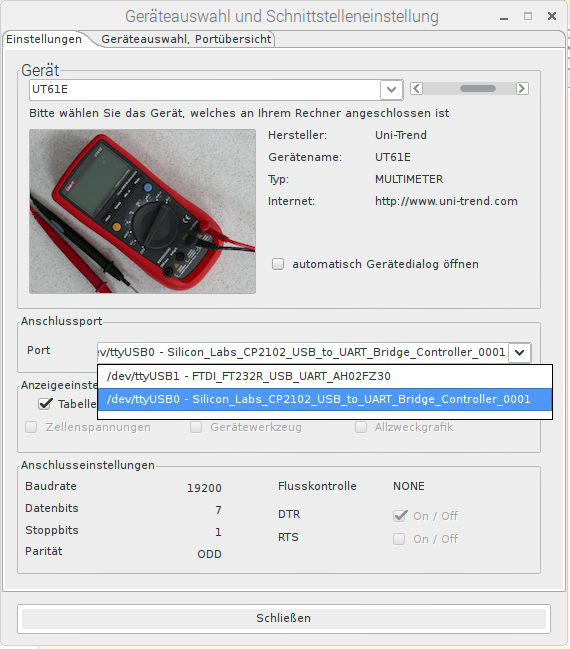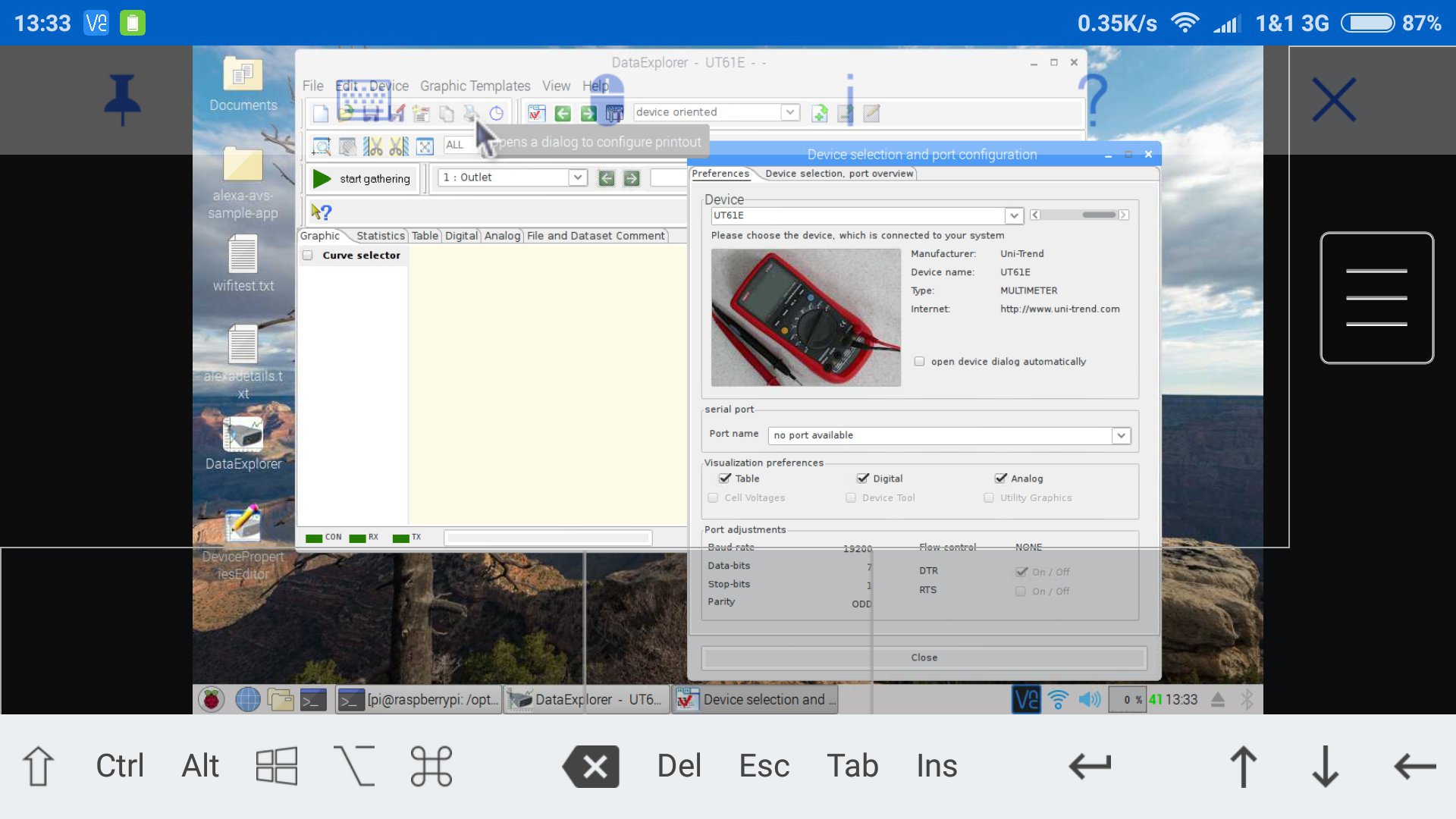kreisl
Flashlight Enthusiast
- Joined
- Jul 5, 2012
- Messages
- 2,245
Note: The room temperature is 23.0°C+, we are in summer after all! :sweat:
The raspi (here: Raspberry Pi 3 Model B ©2015 ) is probably the #1 best-selling single-board-computer (SBC) ever. While more modern, higher performance, easier-to-use competitors exist (ASUS Tinker Board, LattePanda, a. o.), they also cost more and draw more energy from the USB power source, which could be a critical factor for the application.
) is probably the #1 best-selling single-board-computer (SBC) ever. While more modern, higher performance, easier-to-use competitors exist (ASUS Tinker Board, LattePanda, a. o.), they also cost more and draw more energy from the USB power source, which could be a critical factor for the application.
Thanks to raspi's immense popularity several commercial aluminum cases are/were available on the market for the various raspi versions, apart from the non-commercial aluminum cases built by DIY engineers. Today i am presenting the slimmest most compact commercial alu case, its assembly, along with a non-invasive mod plus a set of thermal tests. Feel free to use my test results as reference and compare them with your own test results of this or other raspi cases.
Most raspi (or SBC) owners have an adequate inexpensive 4US$ case solution yet, are happy with what they've got or diy made, or don't want/need a nicer case. I am fully aware that the problem with expensive cases such as this (14-28US$ shipped, depending on source!) is that, as soon as a newer raspi version is released, one cannot recycle the case for the newer electronics. So the main motivation why i am posting today is: i planned a mod, did the mod, am extremely pleased with the result, and wanted to share it, because knowledge is power and sharing is fun! :huh:
pro's
Never mind the mod, this case brings joy and satisfaction to the raspi hobby! The construction, design, build quality, accurate machining, heavy wall thickness, effective cooling, slim form factor makes this case a wonderful choice for people wanting a commercial case made out of metal. The price may be steep compared to other commercial cases but imho the product is worth every cent. And you're not overpaying a bit, since the Chinese end consumers don't get it cheaper through Taobao. Fully approved and highly recommended by the squirrel!
Part I. The assembly with the mod.
Each of the 40+ pics is to highlight 1 certain aspect which i will be commenting upon. The pics are in chrono/logical order, as i went on with the assembly project. Now without further ado, let's get to the details, may the story time begin!
Originally the inside of the case heatsinks chip1 and chip3 only and does not contact chip2. After having taken careful measurements of all and everything, my calculations told me that i would need a copper shim of exactly 1.50mm thickness plus a 1.0mm thermal pad to bridge the air gap between chip2 and case (inner wall). With this knowledge i ordered a pack of 20x20x1.50mm heatsink copper shims. Fast shipping, fast delivery, the shims arrived as expected, with smooth flat surfaces. I was curious about how the surface would polish up:

How does one trim 20x20mm to 10x10mm? In the end i wasted 3 shims with my attempts. I tried hard to cut the shim with various Stanley knives. On very thin shims such cutting would work, but on 1.5mm thick shims it failed! I was able to cut through the thickness with my Victorinox and Leatherman pliers wire cutters, however this method bent the shims irregularly. The slightest bend and one had to toss the part:

How about a vise and a metal saw? The vise would have crushed one end of the part, leaving the other end stress-free. I was too lazy to go after this failsafe method and decided to try some sawing action with the file of my Spirit X multitool. Took ages lol but we were getting somewhere:
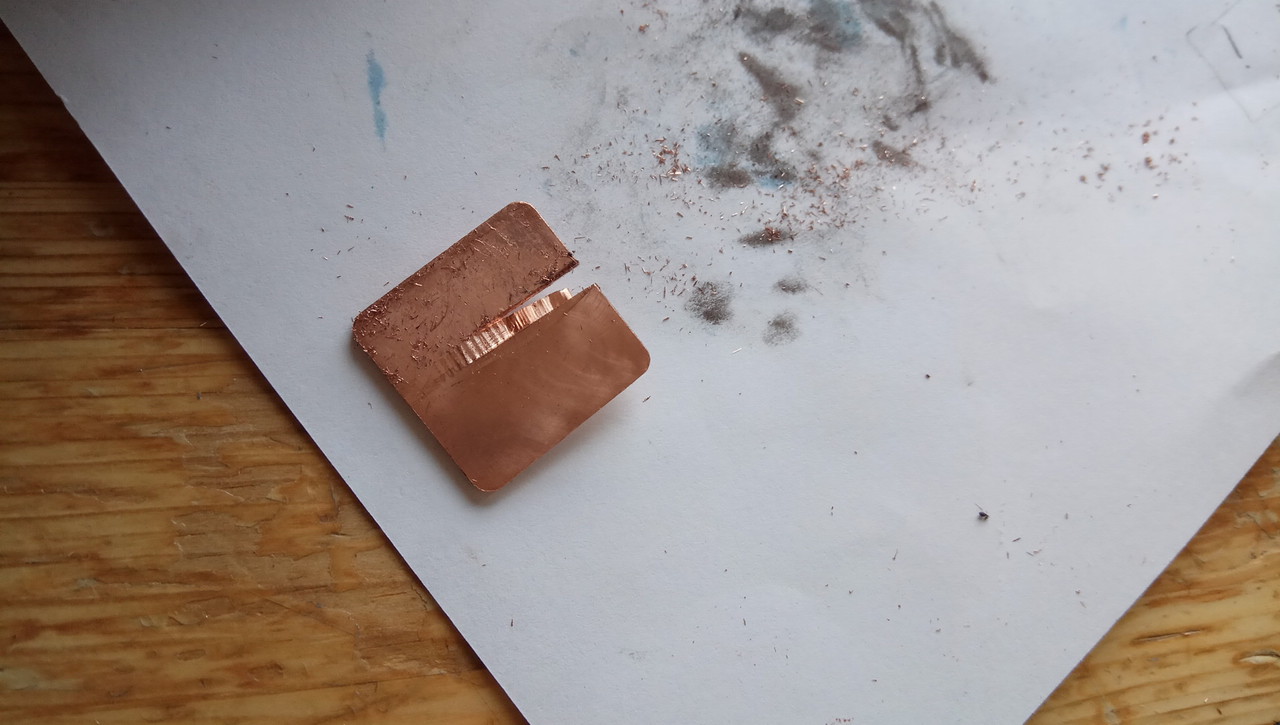
The bottom case (bottom half of the enclosure) is to cool/heatsink chip3. Sophisticated machining, flawless anodization, thick material thickness, loving it:
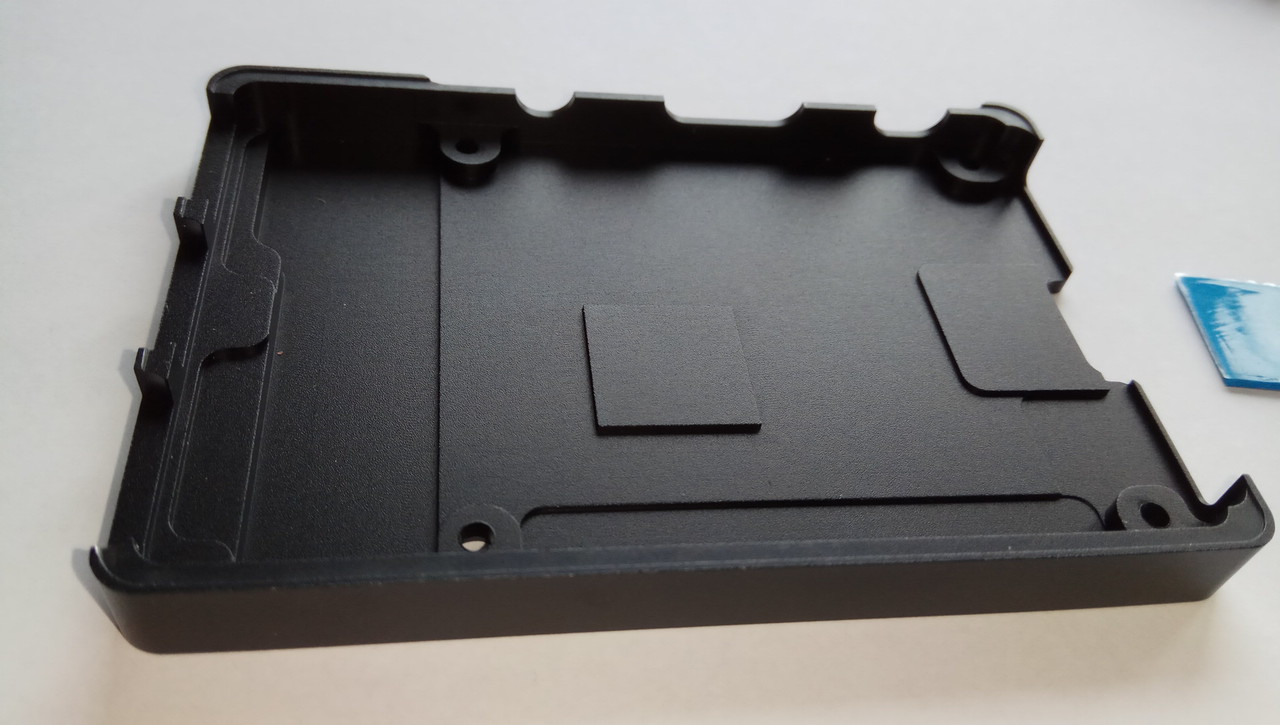
For all intents and purposes we'd still need a thermal pad, if we weren't using thermal paste/grease. The manufacturer provided 1.0mm thick thermal pads, perfectly fitting. The pads are not really sticky but as far as i can tell they do have some sort of adhesive on their surface:
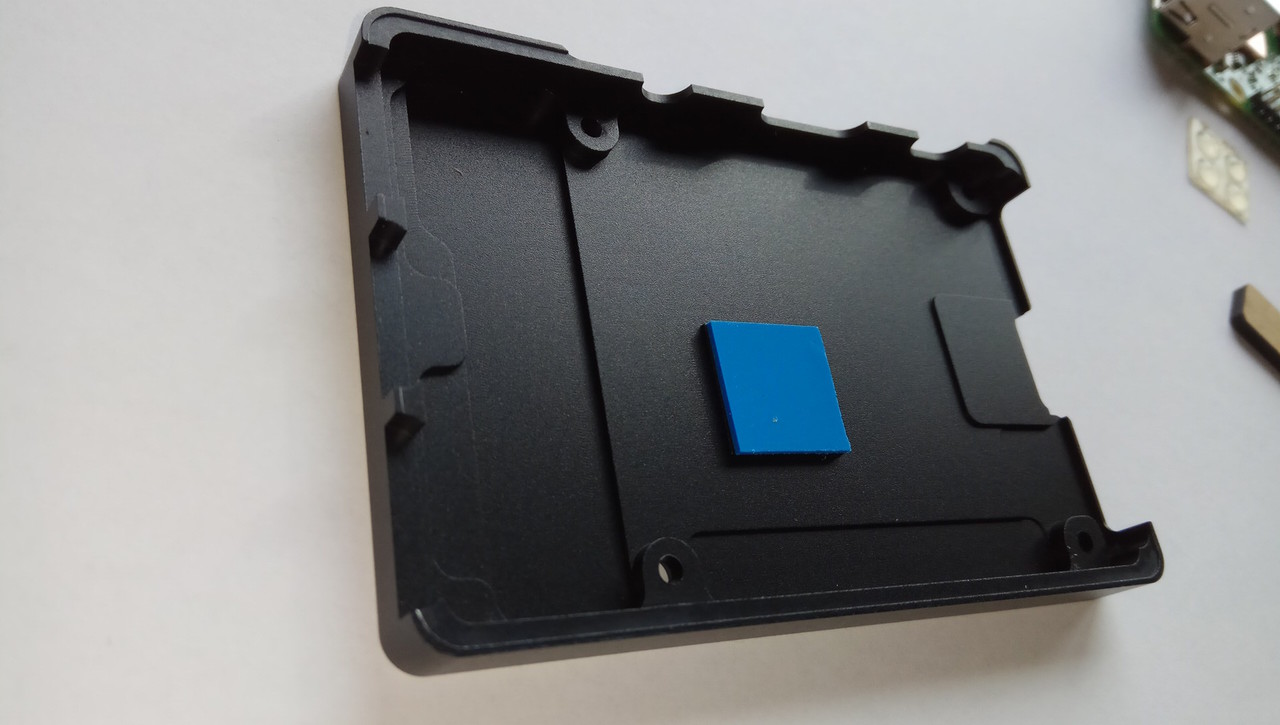
I did a quick check to see if the case was touching the pad. The 'cooler3' did leave a mark on the pad, cool:
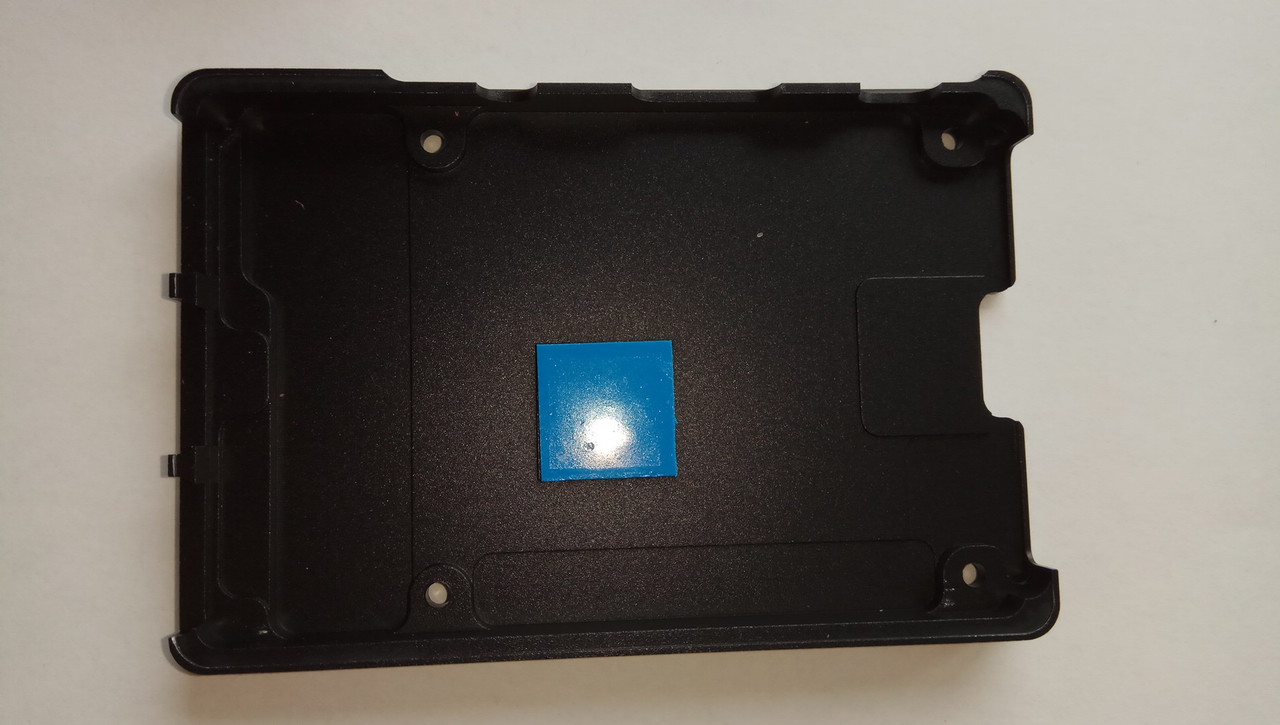
The top case (top half of the enclosure) does not have a 'cooler2' for chip2. One could regard my thick shim as heatsink, cooler, or bridge, feel free to call it as you wish:
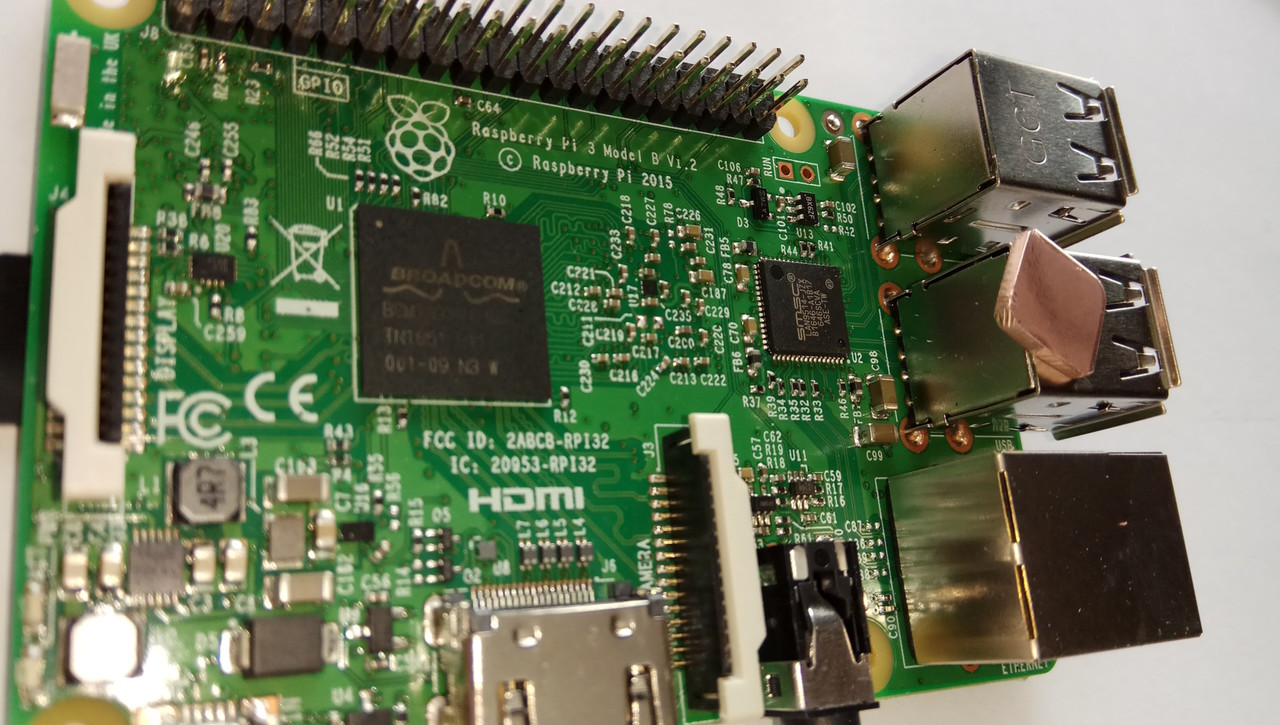
Since there are electronic components located in the immediate vicinity of chip2, the shim should not be larger than chip2. Size comparison:
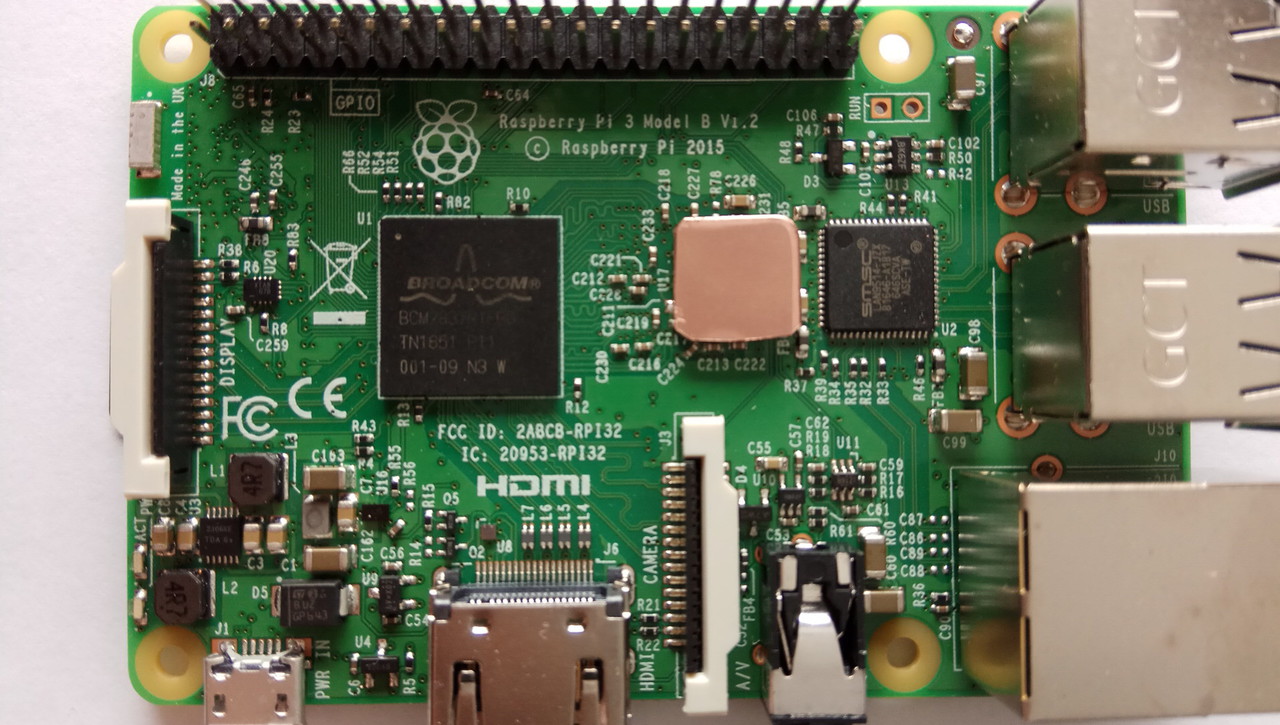
So there's chip2. But how would you stack the shim and the pad, in which order? Chip+shim+pad or chip+pad+shim? Anywho, do you have thermal paste at hand? Keep in mind that the shim is a free-floating part in the stack, unless you fix it to either the case or the chip. Fix how? Best would be thermal glue. I decided to simply use tacky glue and attach the shim directly to the chip:

Why? Because perfect positioning of the shim was crucial. By moving and pressing the shim gently onto the chip i minimized the glue layer and made sure that no air bubble was trapped in between. Some glue spilled over, no big deal:
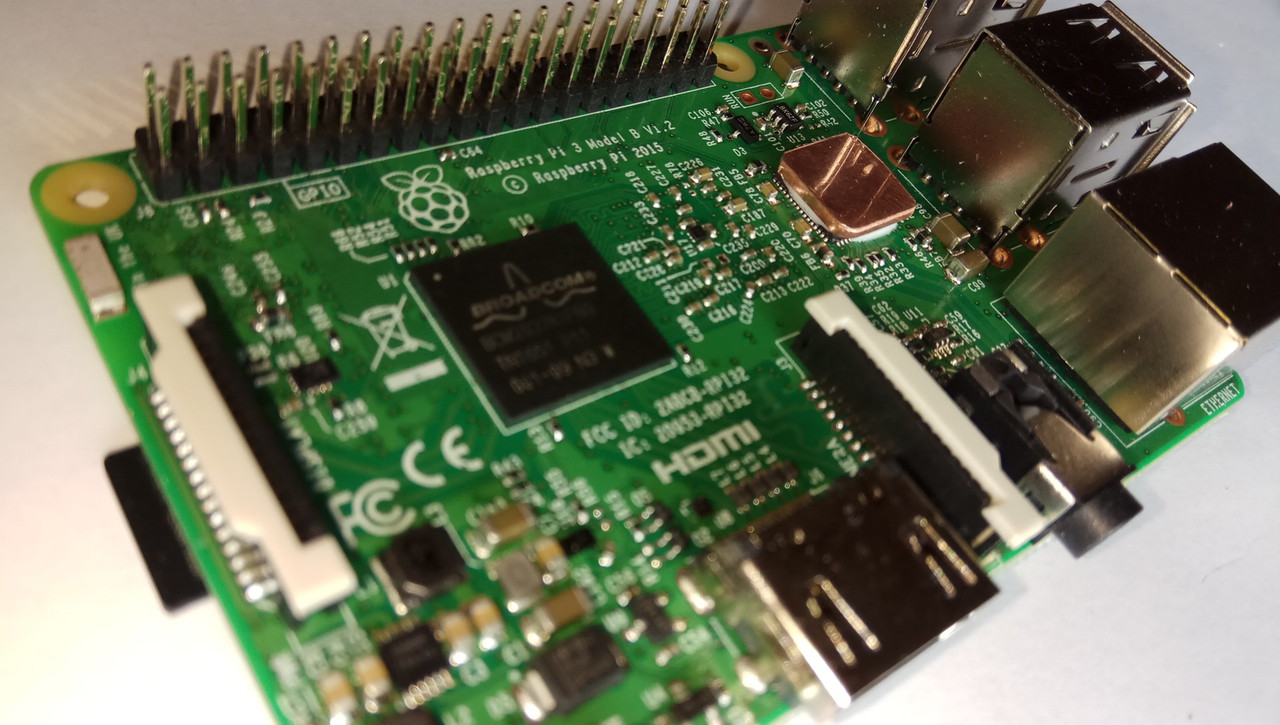
No big deal, because the spilled glue contracts after the volatiles have evaporated. It was also time to cut some thermal pad in the size of 10x10mm:
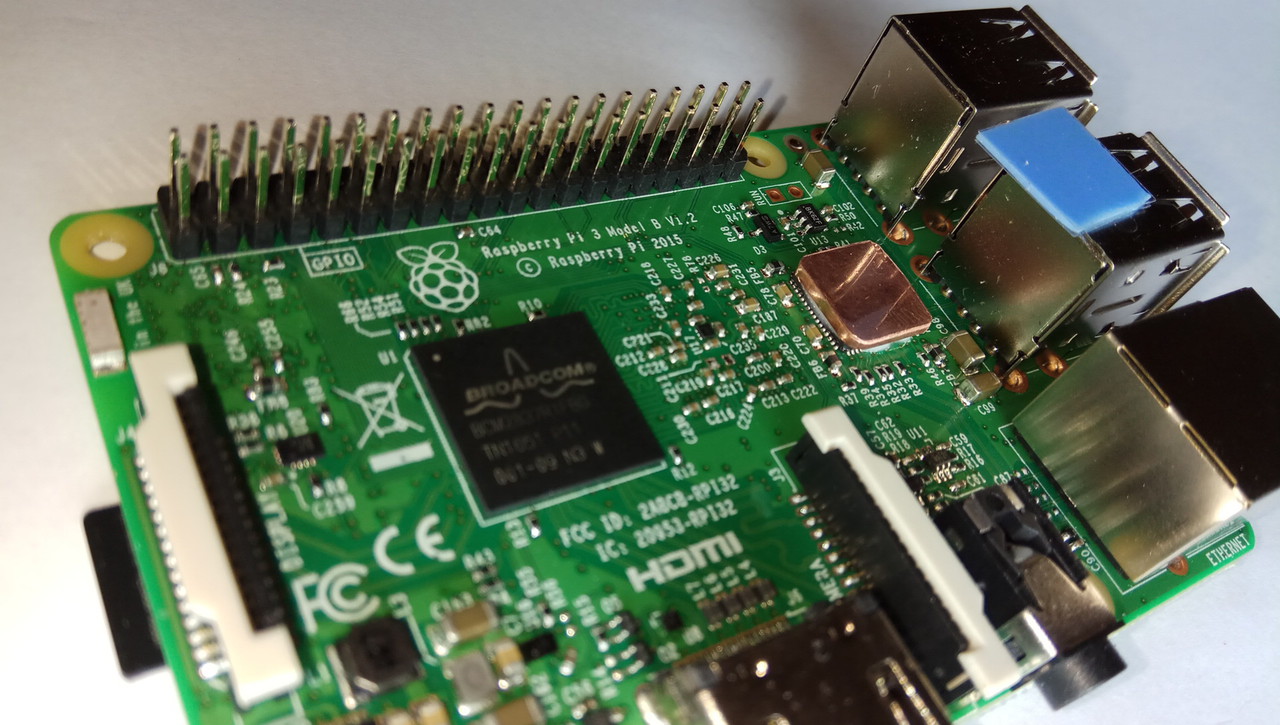
A test seating. Nice. The rear part is made out of some transparent black plastic material which reminds me of acrylic glass/Plexiglass. Both faces are covered/protected with a pseudo-adhesive paper:
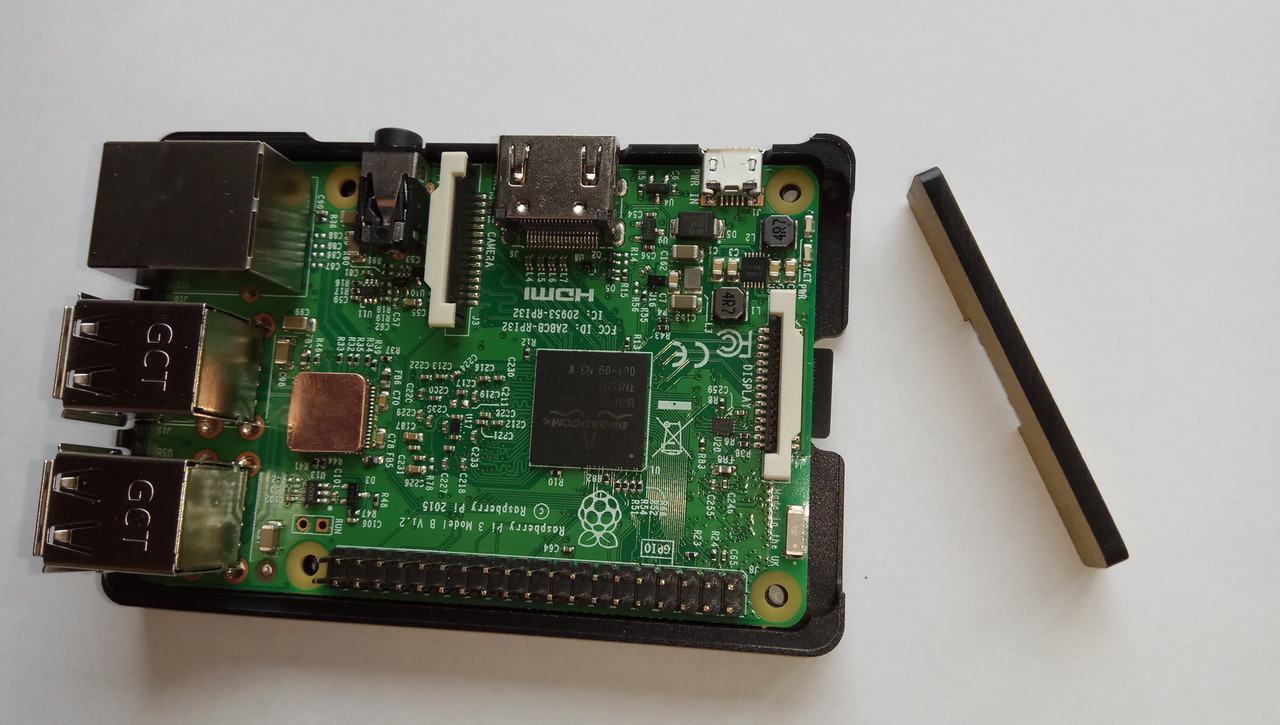
The part was cut professionally, probably with laser-cutting technology. It fits accurately into the CNC-drill machined groove. Due to the geometries minimal wiggle room in some direction would be natural:
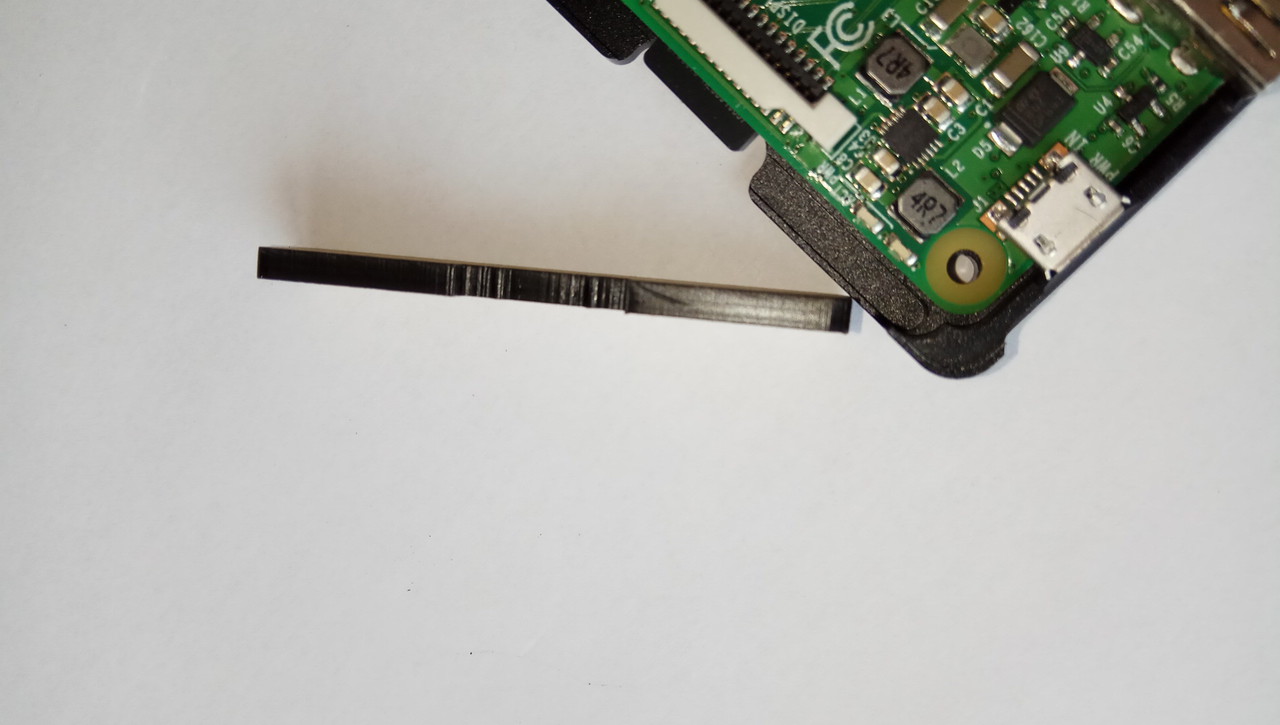
The finish of the plastic faces is uber smooth. Mirror finish:
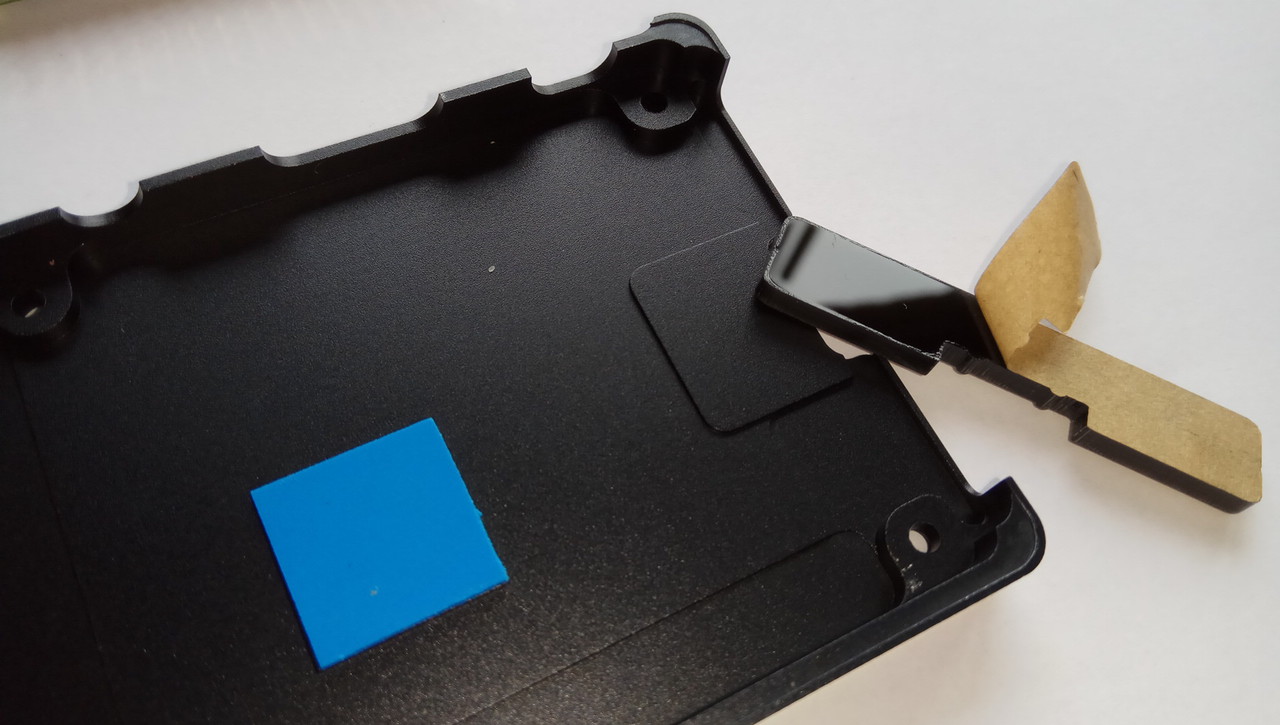
I came up with the idea to create a snug fit by adding a layer of adhesive film on top of the mirror finish. The clear adhesive film could also protect against scratches. Usually this kind of film is used in gemani to protect book covers against dust, humidity, dirt, wear and tear. It does not stick aggressively to surfaces and does not leave glue residues. I also use it as screen protector on some displays:
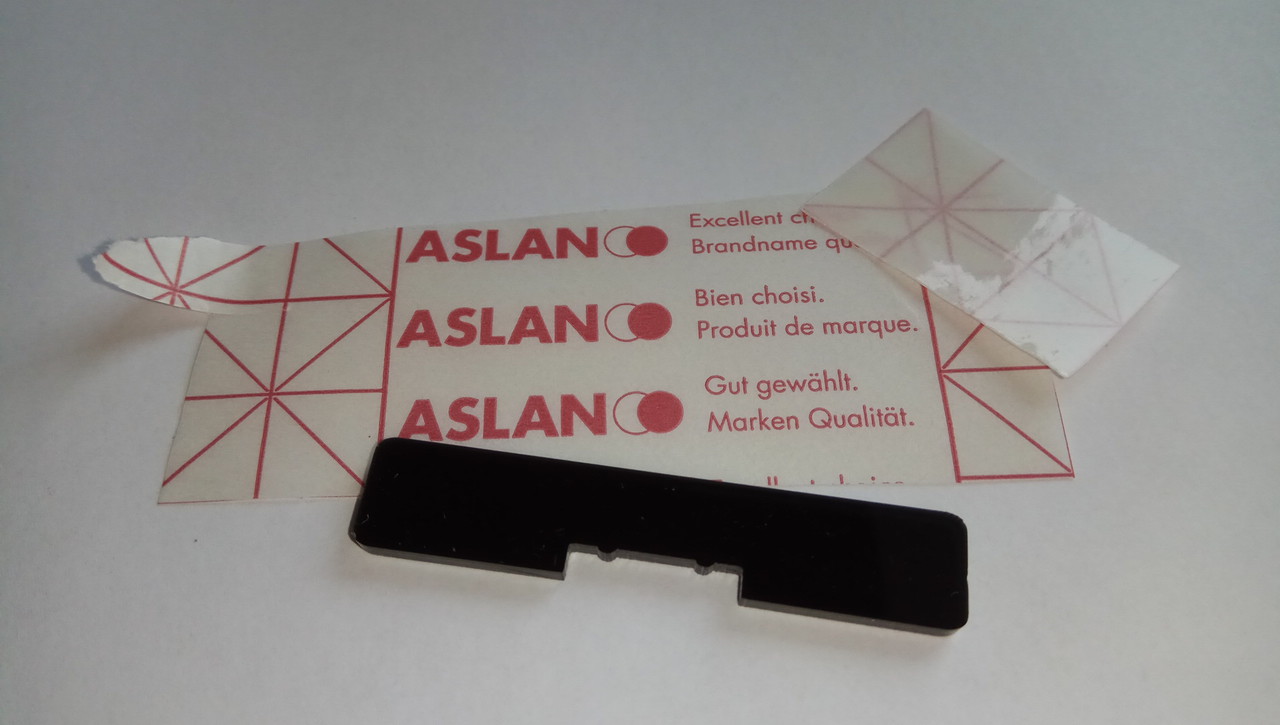
It is not necessary to cover both faces of the plastic part with the adhesive film, just the outside face. But the point is to wrap the film around the edges so that this would create a snug fit in the precisely machined groove:
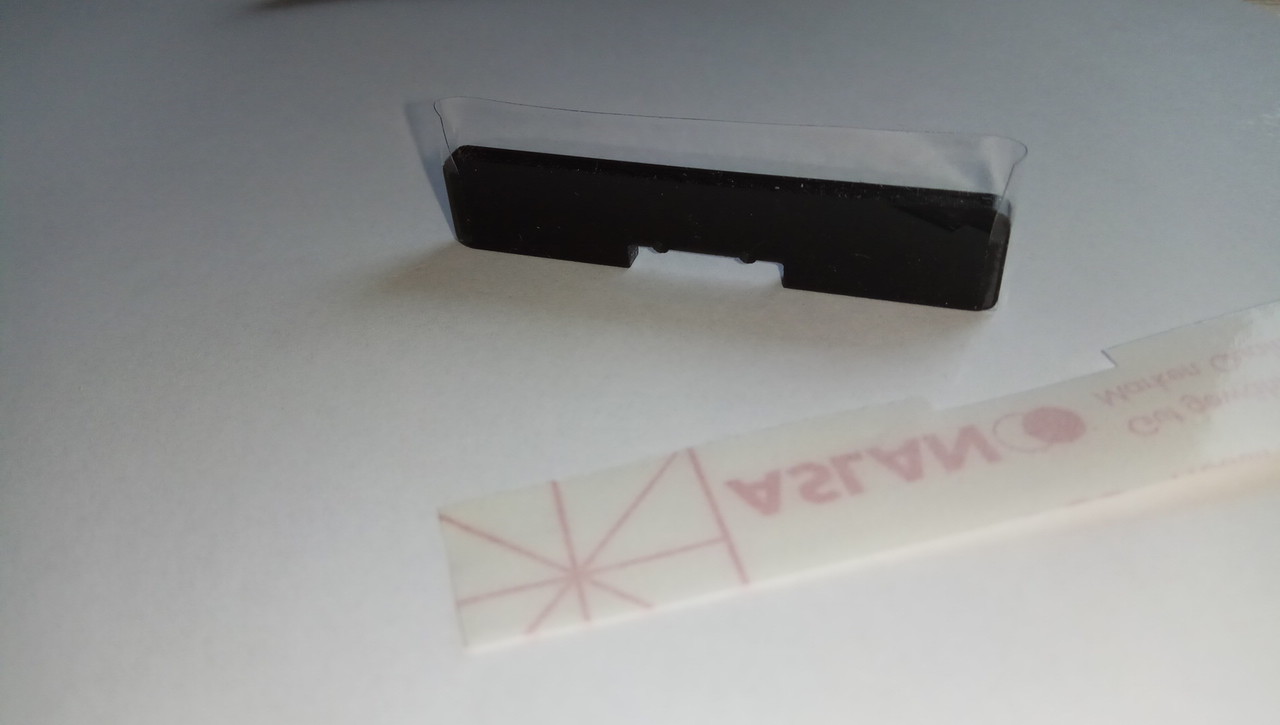
Sticking the film to the upper edge ensures that now all 3 directions, x-, y-, and z-directions, are padded by the film, which would leave no possible wiggle room after the complete assembly:
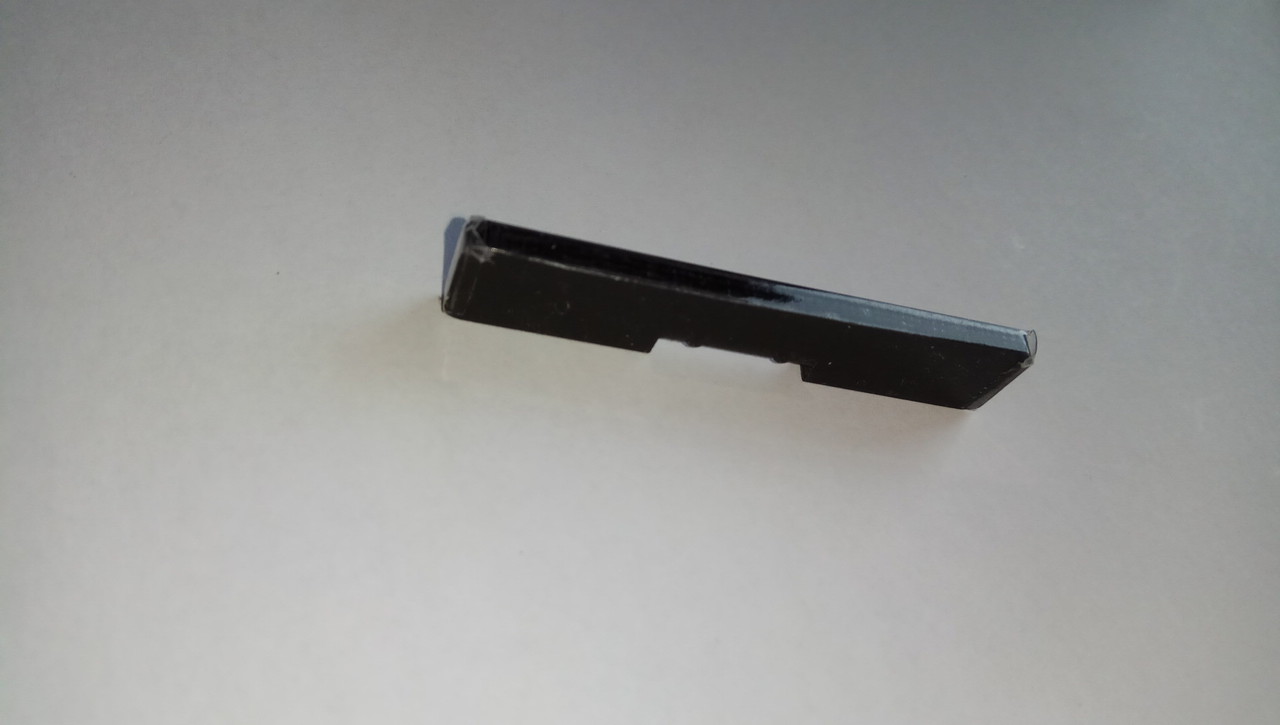
Yes, i can feel it, the fitment is now snug. The film will prevent any kind of rattling sound, even if there will still wiggle room left. But there is isn't, hehe:
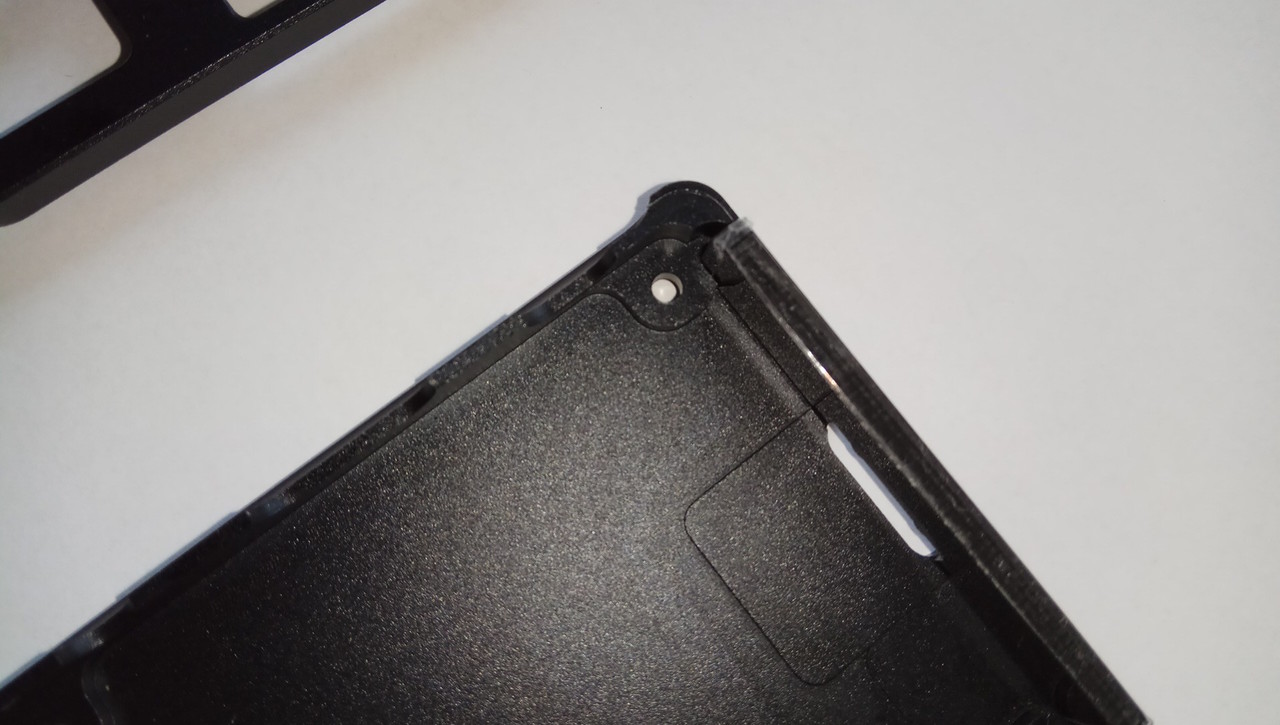
Looks legit so far, what do you think? A pic before the addition of thermal pads:
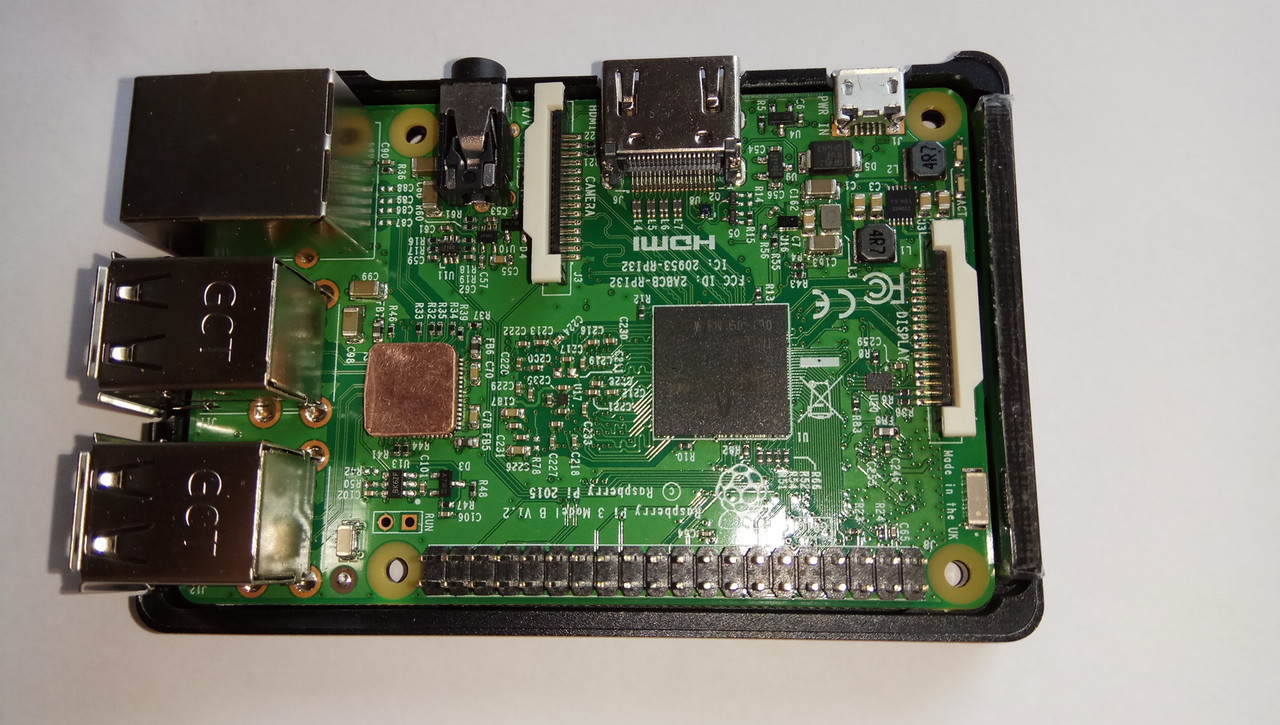
A pic after the addition of thermal pads. All thermal pads used in the assembly have the same thickness, 1.0mm:
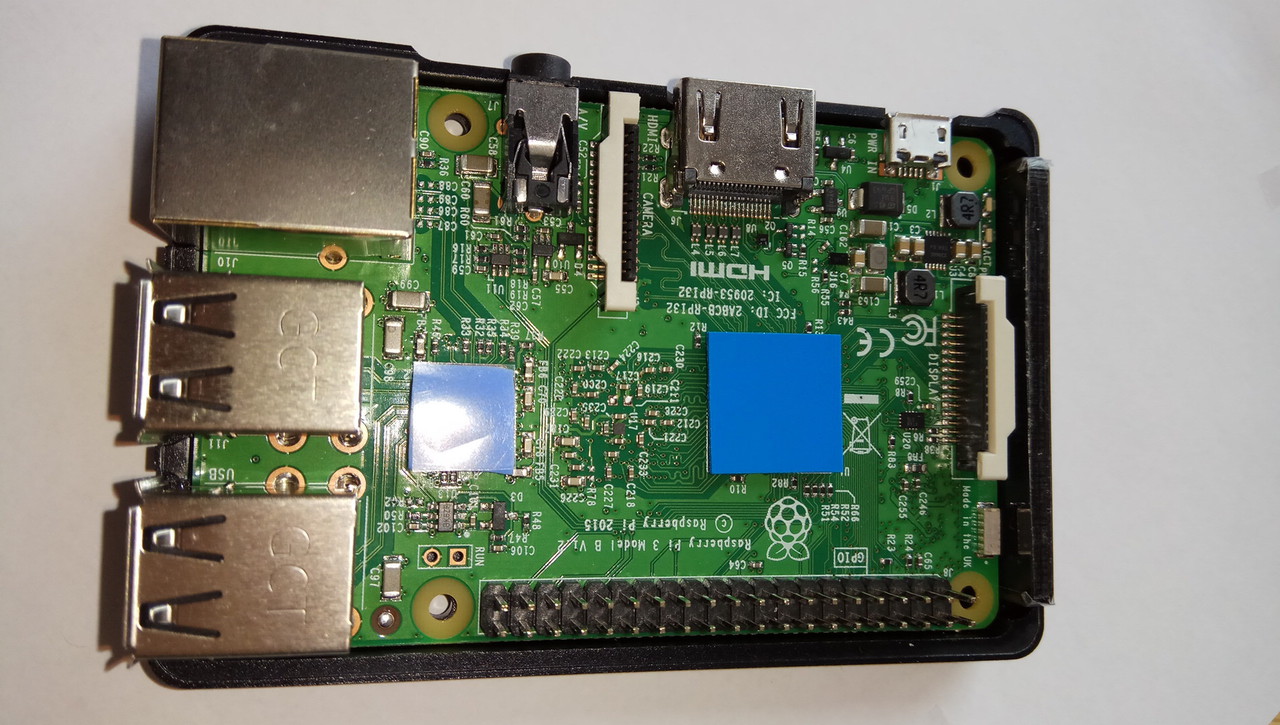
What does the inside of the upper case half look like? Looks quite elaborate, if you ask me. As you can see, there is only a 'cooler1' for chip1. Other raspi commercial aluminum cases do have a 'cooler2' for chip2, which is why i got inspired to add a cooler in this case for chip2. Anyhow, here are 2 shots in succession:


Finally i put the upper case half on top of the lower case half w/ its seated PCB, flipped the entire case, screwed in the screws with the provided Allen key together. The bottom side of the case has recesses for the four rubber feet and an optional label, what a nice touch:

Wow, this was interesting. After tightening the four screws, i noticed that the two halves didn't match up perfectly at the seam. No perfect fit, that is alignment, by maybe half a millimeter. So i loosened all four screws, corrected the alignment by that half a millimeter, and then retightened the screws. Voila, this did the trick. Now i got the perfect fit, really beautiful, you cannot feel the seam anymore:
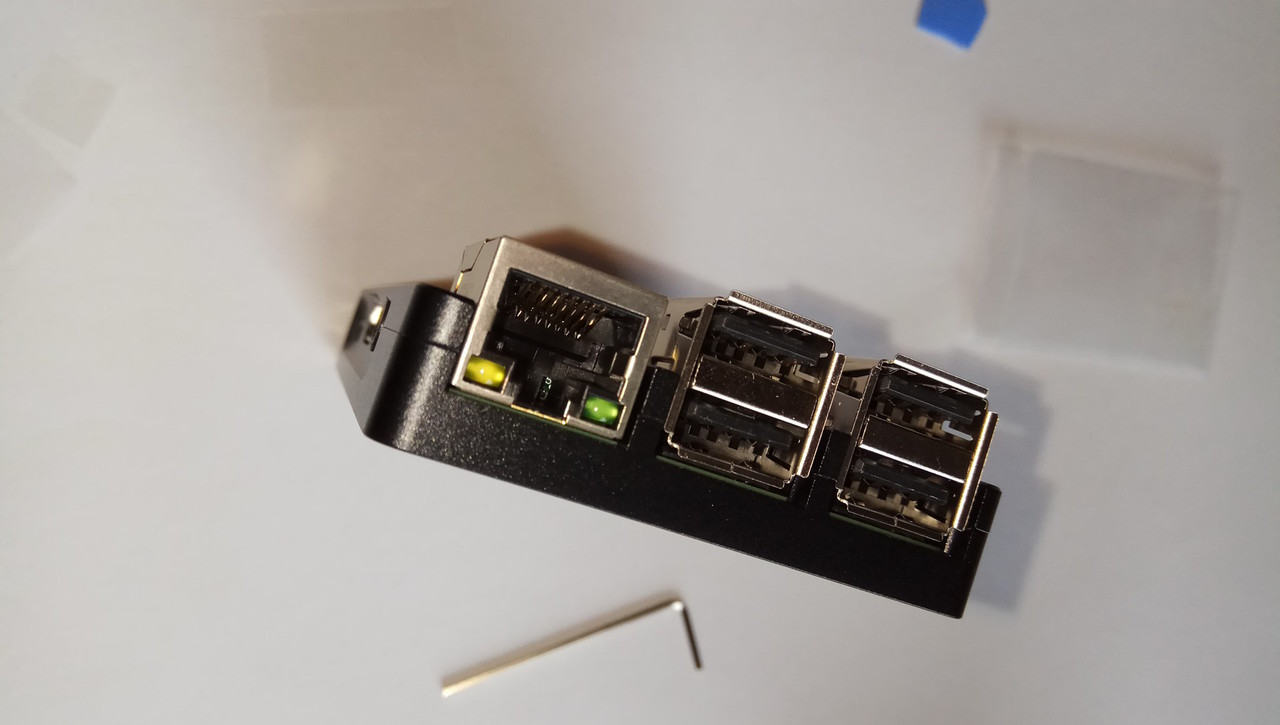
The plastic part had a mirror finish. Unfortunately the adhesive film ruins that look. Also note the thickness of the plastic and the aluminum, so sweet:

The following is optional, placing a label sticker in the recess. But i really wanted to have a label in there! I thought that the logo from the raspi retail packaging was a suitable pick. So i cut it out, roughly with a Stanley knife:
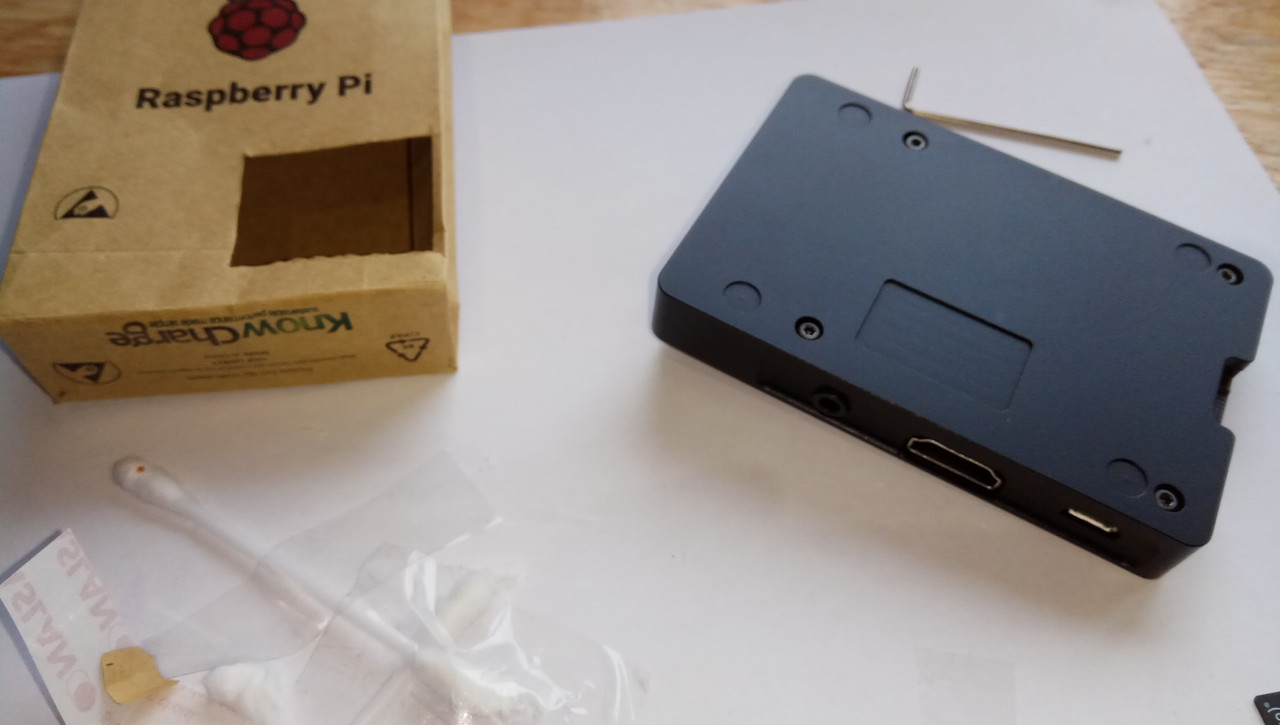
As you could tell from the color, the material is made out of some cardboard paper, good quality stuff. Since i didn't have thin double-sided adhesive tape in the household, i thought that i could stick the paper to white duct tape with my paper glue. Duct tape sticks reasonably well on anodized aluminum and could be removed without leaving residues. And while we're at it, why not protect the paper label side with clear packaging tape? I do have lots of tape in the household:
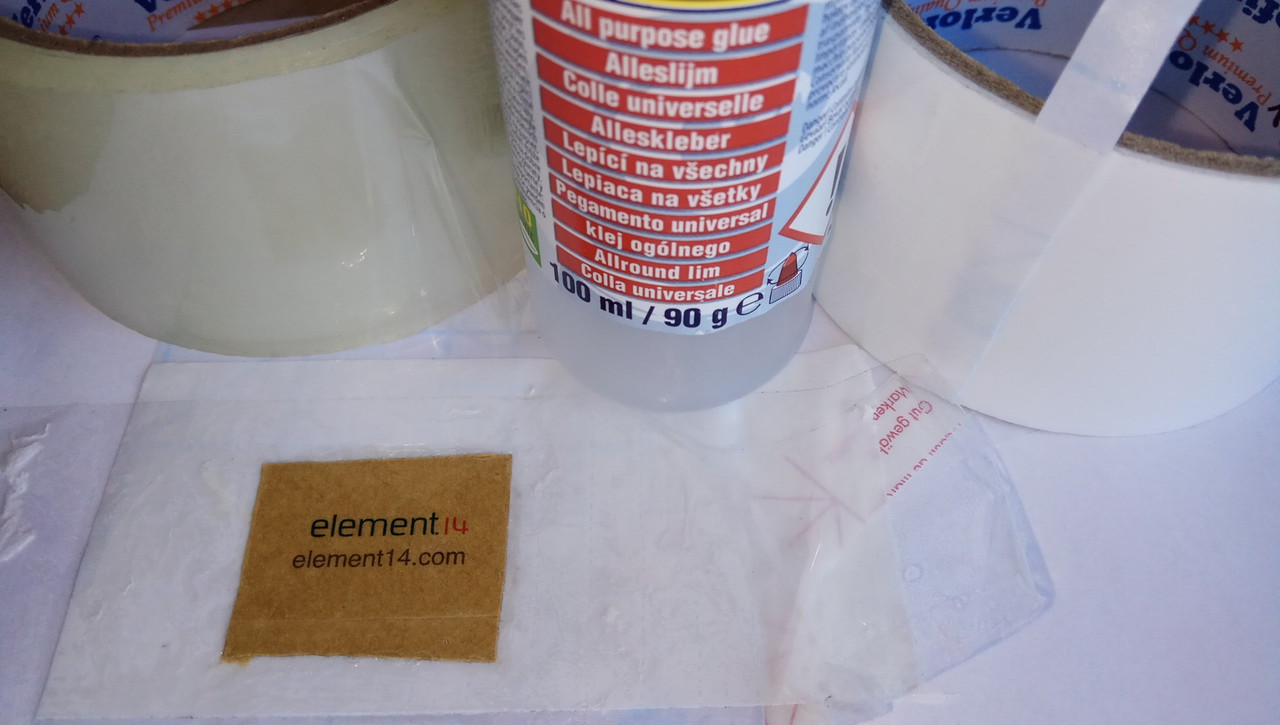
So i stuck the white duct tape temporarily on non-sticky paper, sourced from adhesive film remains, put some glue on it, then the logo paper, then the clear packaging type, thereby creating a diy laminate consisting of 5 layers. I felt like a pro! Then i placed this laminate under a table foot with an eraser for even weight distribution and left it there for drying overnight:
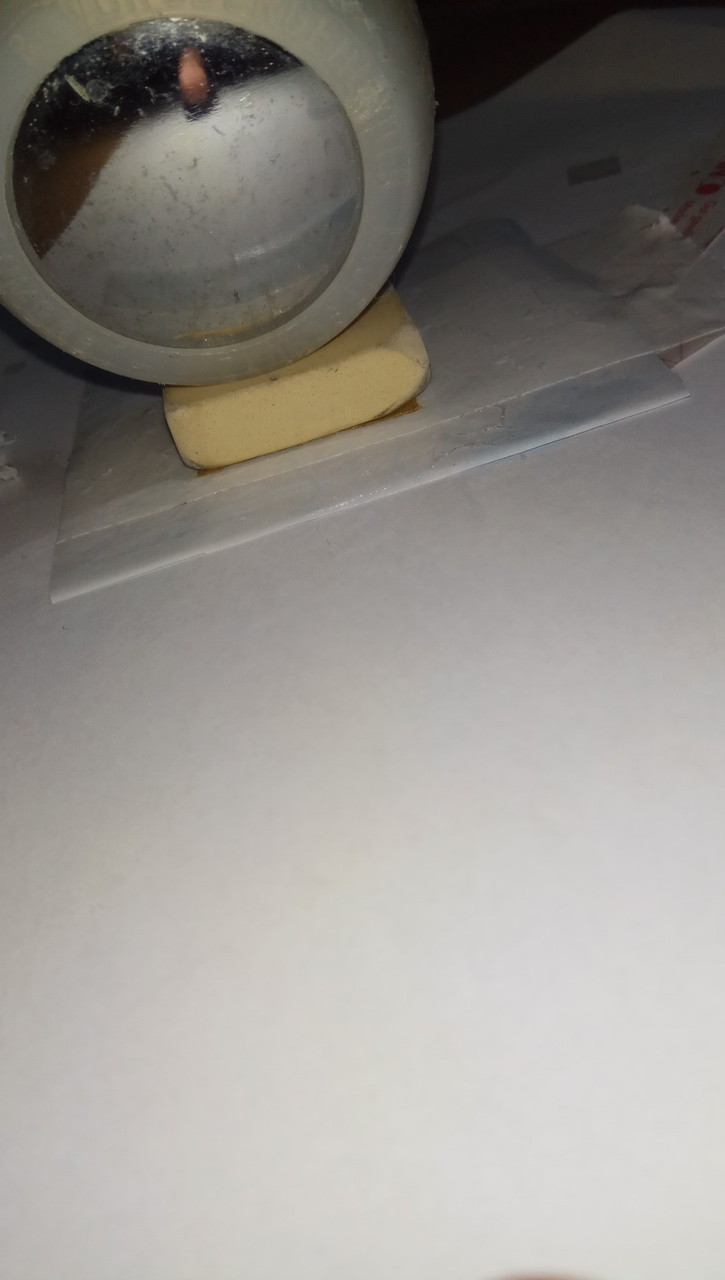
The next morning i cut the label out as best as i could. Poor job. I failed at the dimensions and also the corners. If i had a second try, i'd do a much better job. Can't be satisfied with it but since i don't possess another retail box, i must live it, be a man and *uck it up:

Argh, the glue did not stick at all to the duct tape surface! What a fail. To not waste time any further, i decided to glue the label on the anodized aluminum. Not a great decision because this would mean a permanent solution basically:
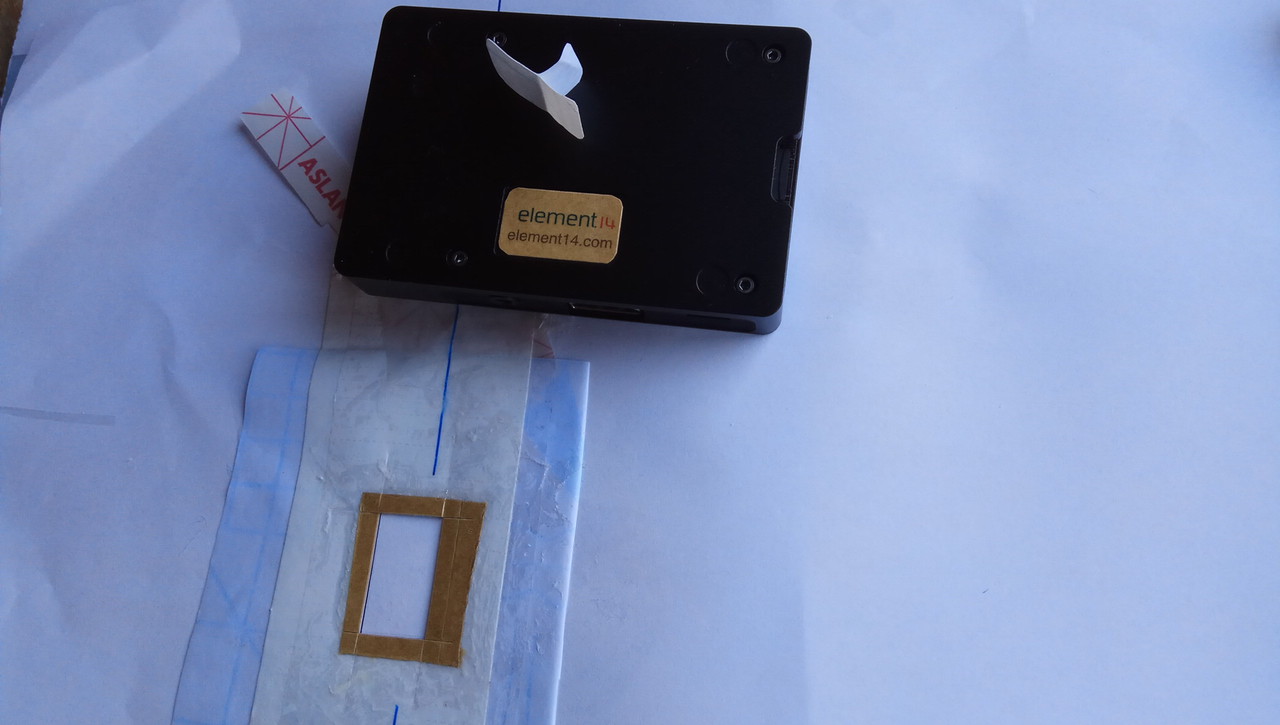
Here again, you can see that the really smooth finish of the paper looks ruined after adding a layer of clear packaging tape. The rubber feet fit nicely into the circular recesses. They are of the clear type and have tiny bubbles inside. Cheaply manufactured i would say:
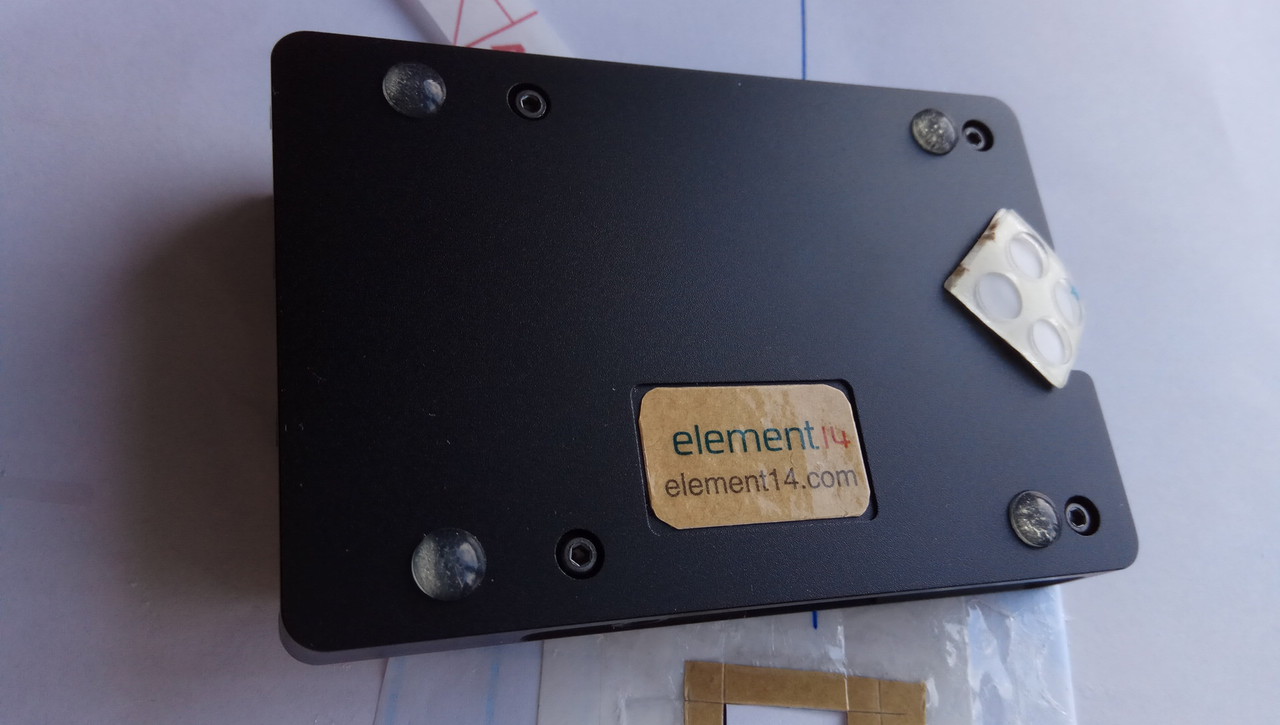
No need to trash the retail packaging bag. I closed the cutout hole and harhar taped the entire thing with clear packaging tape. Why? Because i am going to use it as carry bag, storage bag, and even operation bag. May no dust ever come inside my raspi in headless operation mode:
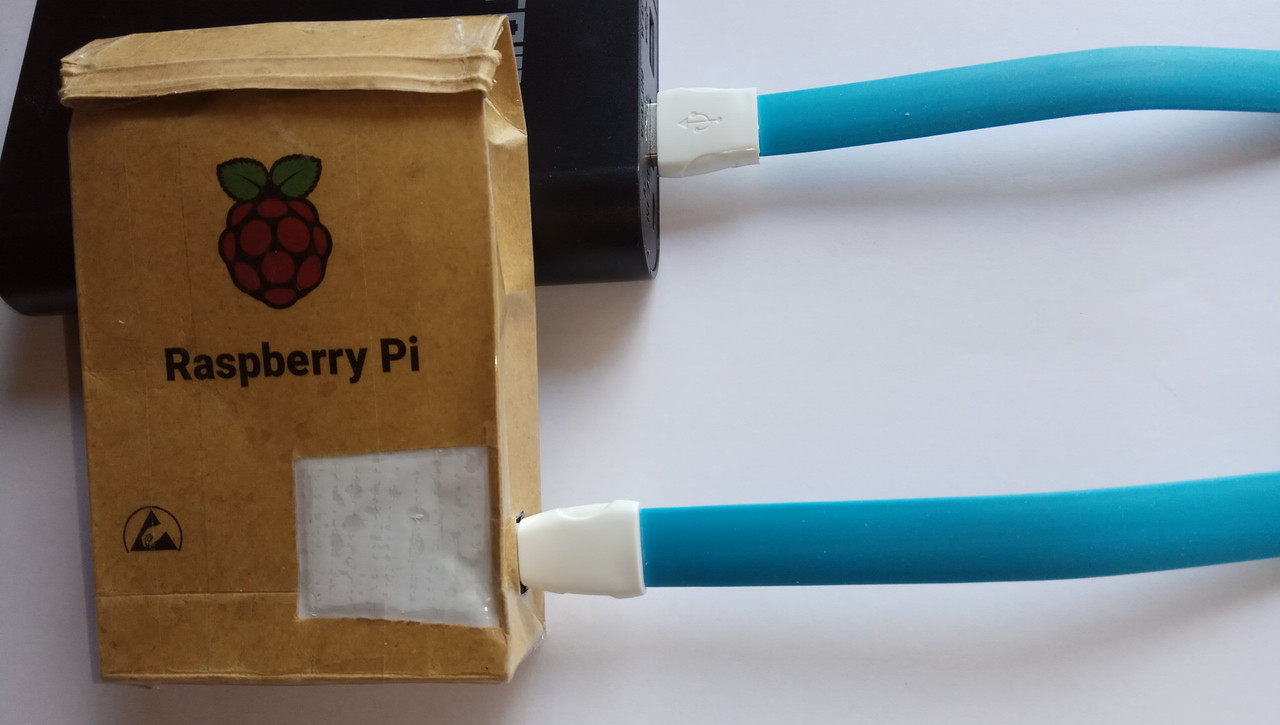
Oh! You still don't know what the product looks like from above? Finally the first shot showing what the assembled product looks like. I really dig it:
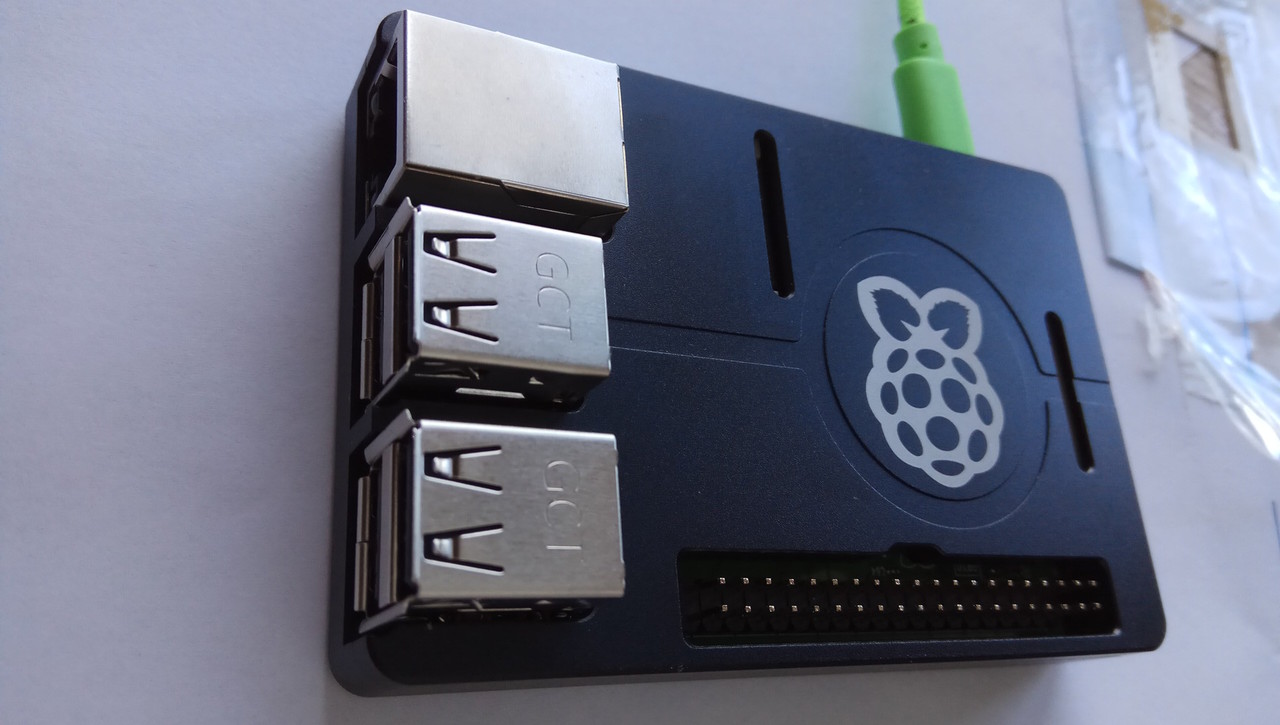
The slits in the aluminum are perfectly aligned with the internal ports. Really all ports are accessible, which is extraordinary for an aluminum case, just compare with other raspi aluminum cases on the market:

Since i don't make use of those three ports, i sealed them with electrician's tape. Protects against entry of my dandruff:
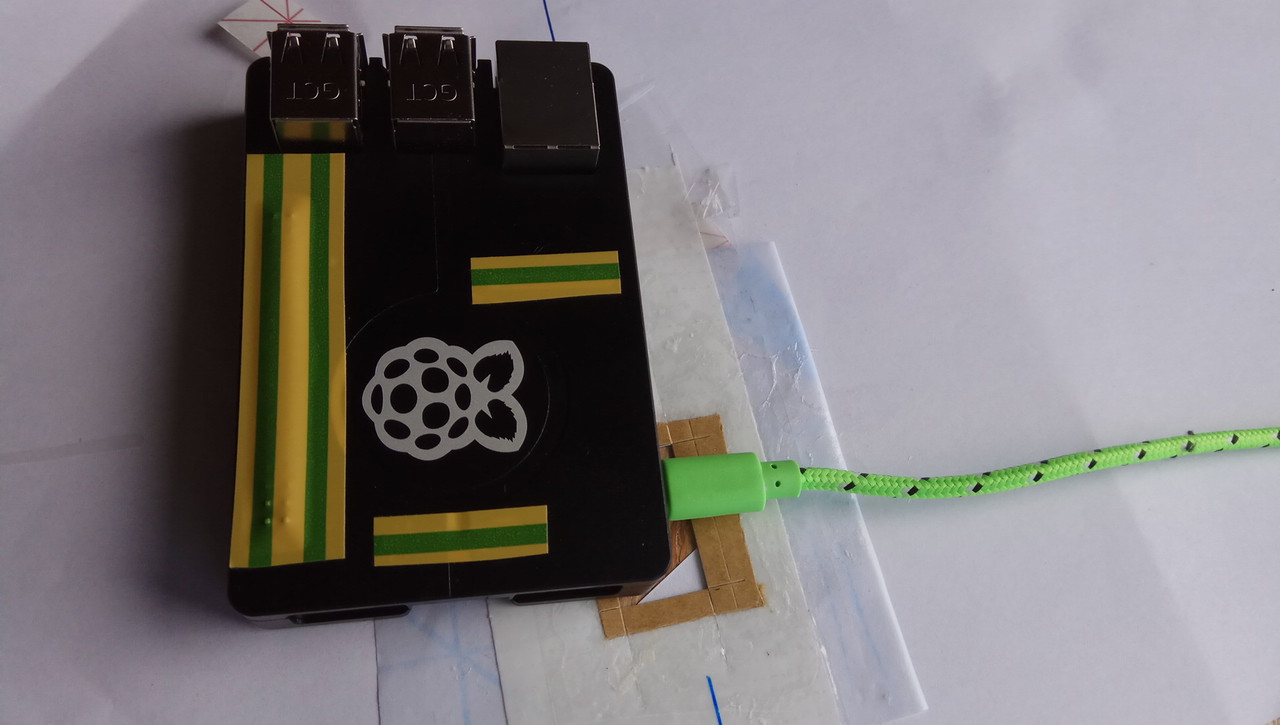
Only after the assembly of the case can one insert the micro SD card. It is easy to insert the card and pull it out through its convenient accessibility:
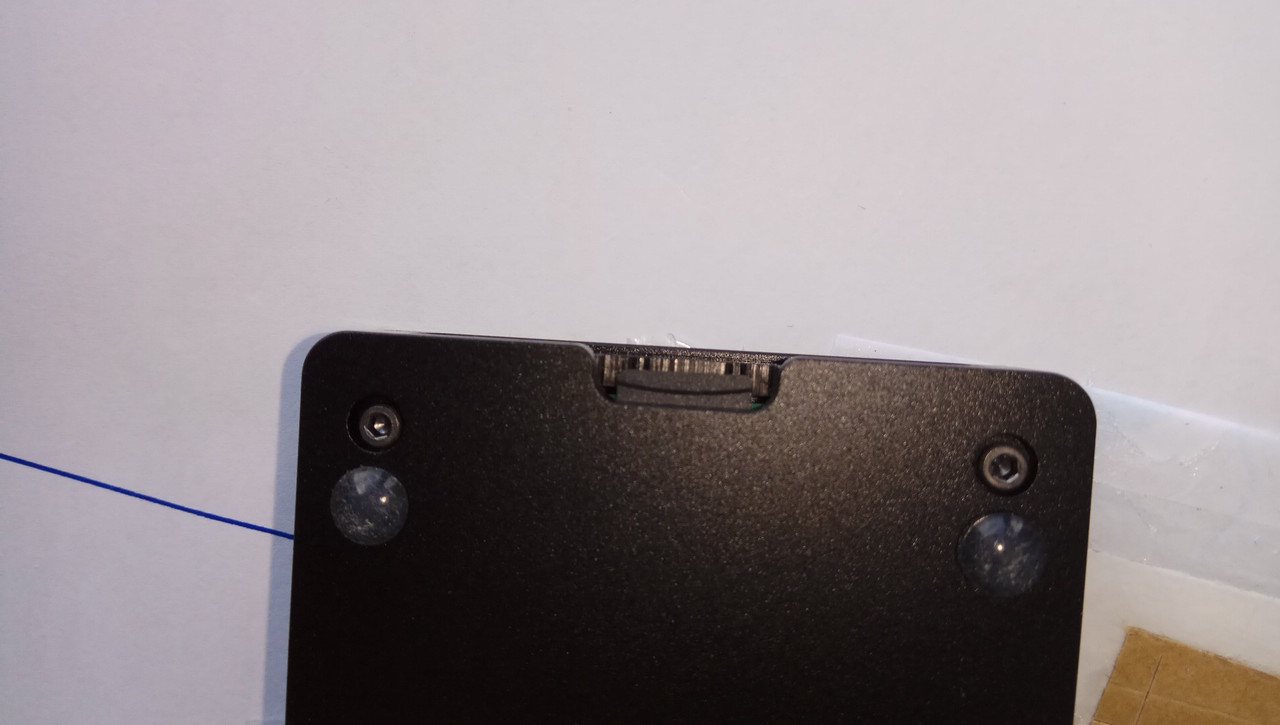
Yet another shot of the rear, now with the card inserted. I believe that the two nubs on the plastic have a function, you name it:
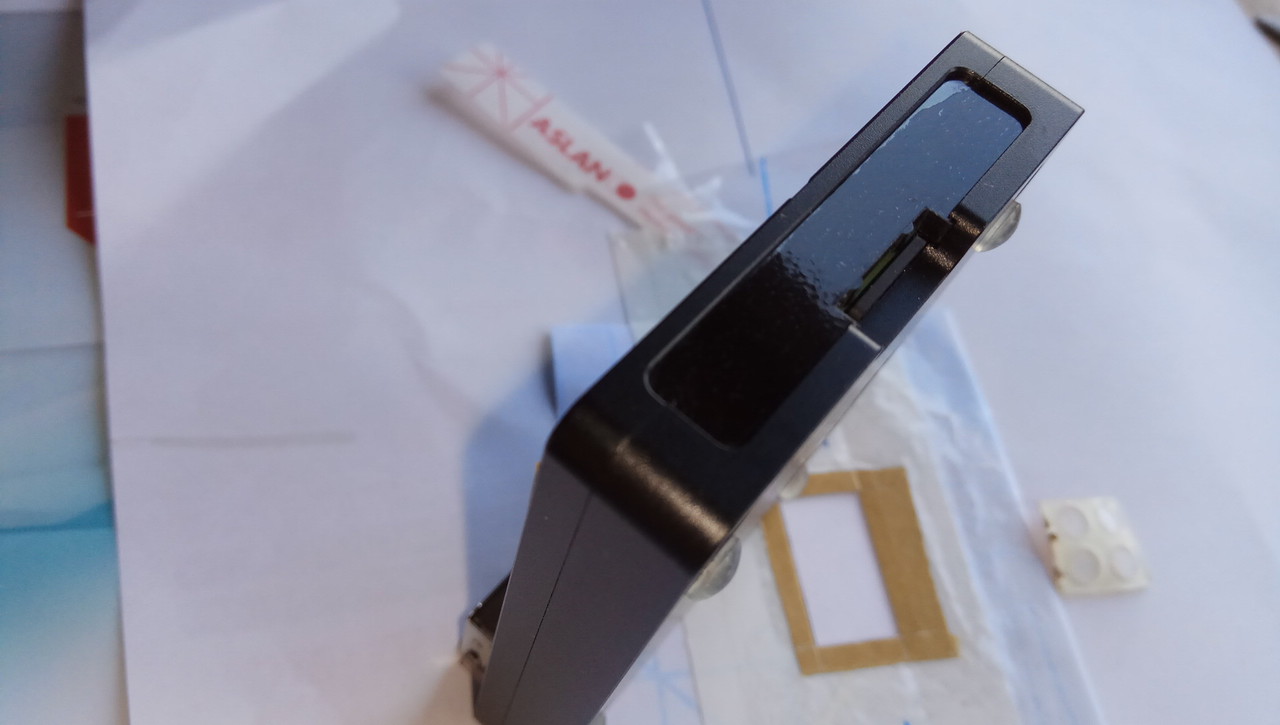
Aha yes sir, the black plastic is transparent after all! The two LED's are clearly visible. The red LED means that the raspi is connected to power, the green LED signals (write? read?) activity on the micro SD card. One must not disconnect the raspi from power when the green LED is on because such human interaction could corrupt the SD card:
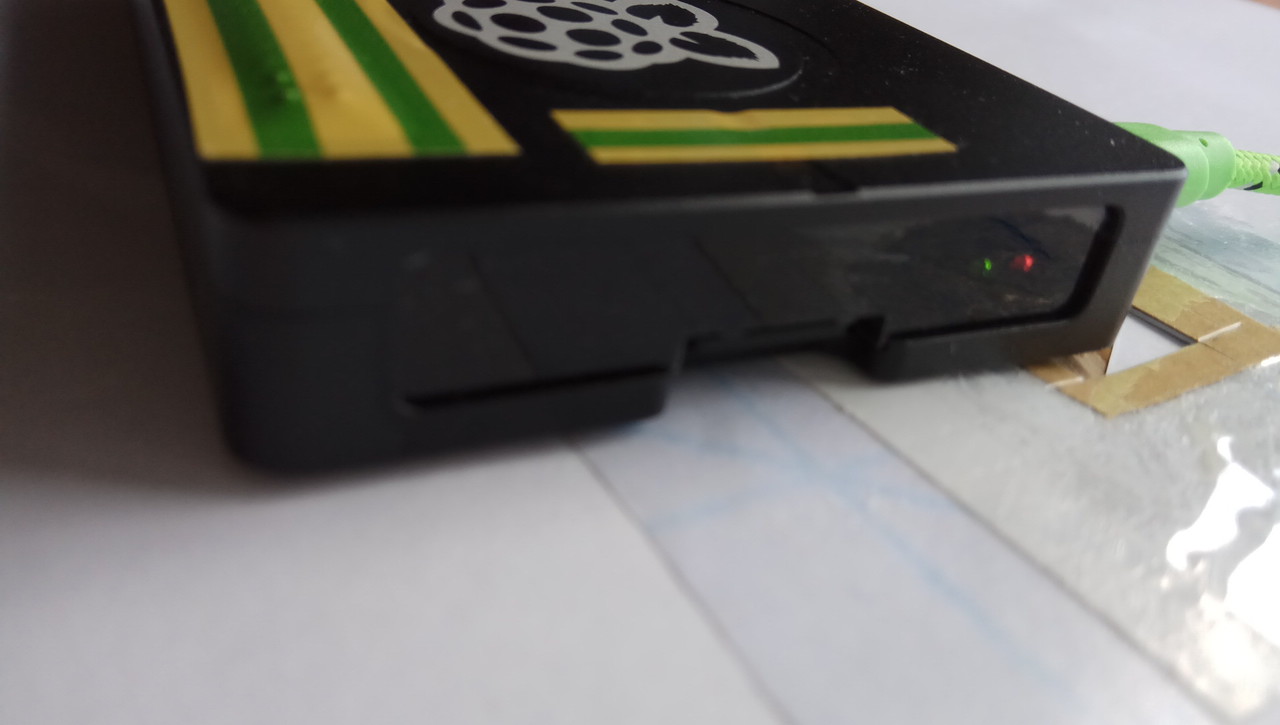
Part II. The thermal tests.
I conducted a total of 5 tests. In all tests i waited until the raspi had reached a stationary state (steady state) in its environmental setting at no load (CPU&GPU = 0%). Basically you power up the raspi and do nothing further. The raspi will operate under no load, idling, but still consume energy to keep the operating system (Linux) alive, thus its internal temperature will be higher than normal room temperature. Then, at time t=0, i put the raspi under full load (CPU&GPU = 100%) for 15-27min and recorded the internal temperature, as reported by the raspi OS, every minute. When the hot temperature seemed to have reached its own steady state, i cut the load back to zero (CPU&GPU = 0%) and continued to record the internal temperature at various intervals, until the temperature was back at its load-free steady state level.
The only difference between the 5 tests was their external setup. As this raspi case proved to be an extremely effective heatsink, conducting the heat of the 3 chips effectively and fast to the outside of the entire aluminum body, any variation of the external setup could be made visible in the temperature measurements and affected the result.
Test 1 : raspi suspended vertically in the air and pointing with its rear to an upwards blowing fan:
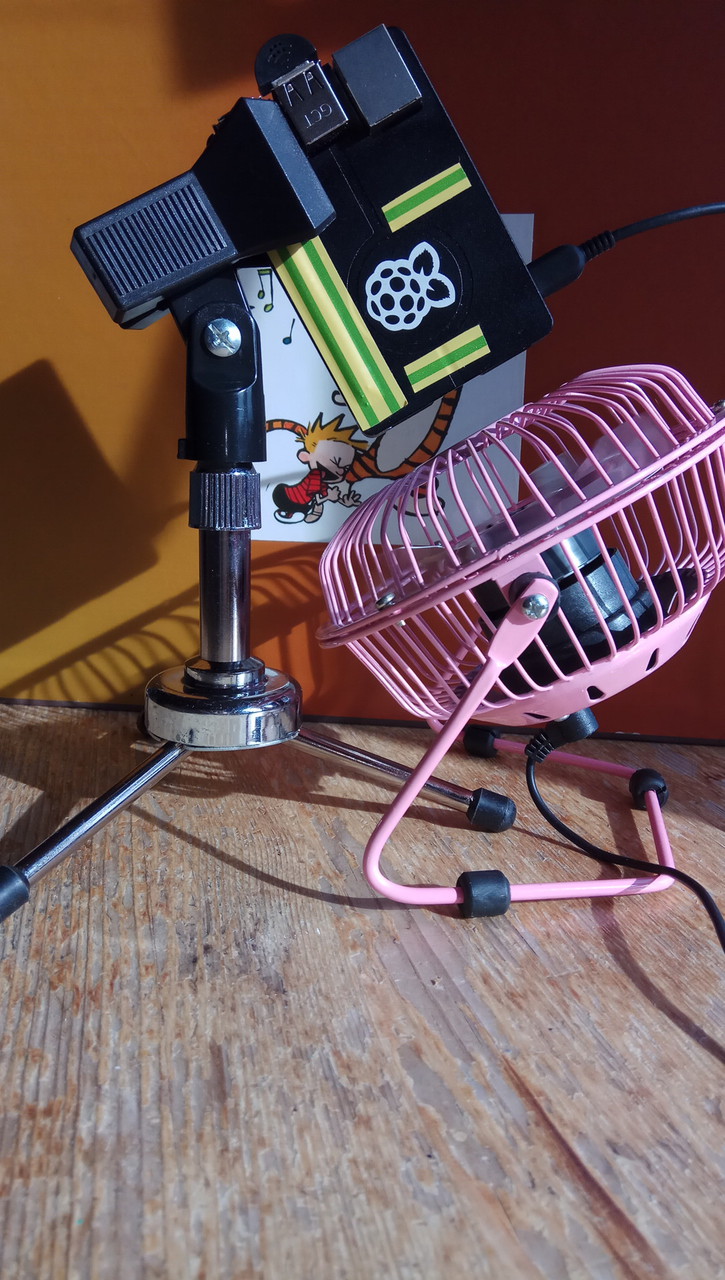
Test 2 : same as test 1, but with fan removed:
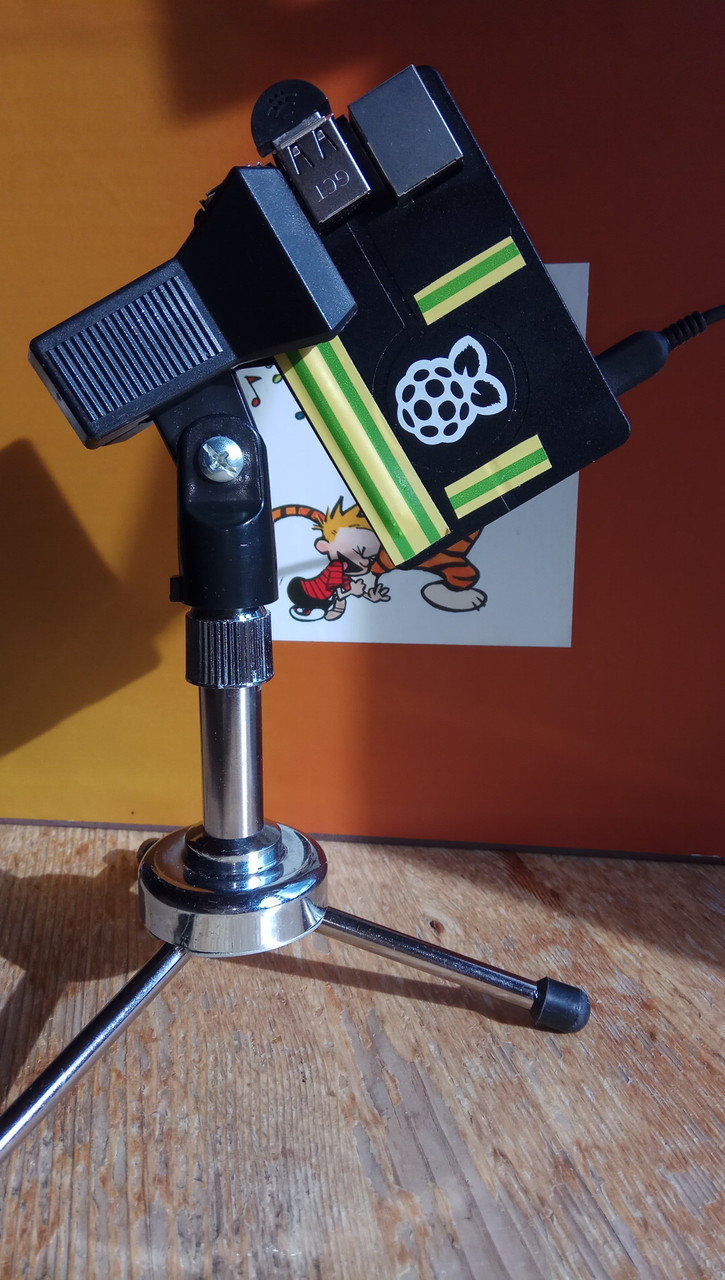
Test 3 : raspi lying flat on a horizontal wood desktop. That's the standard setup, what the case is designed for:
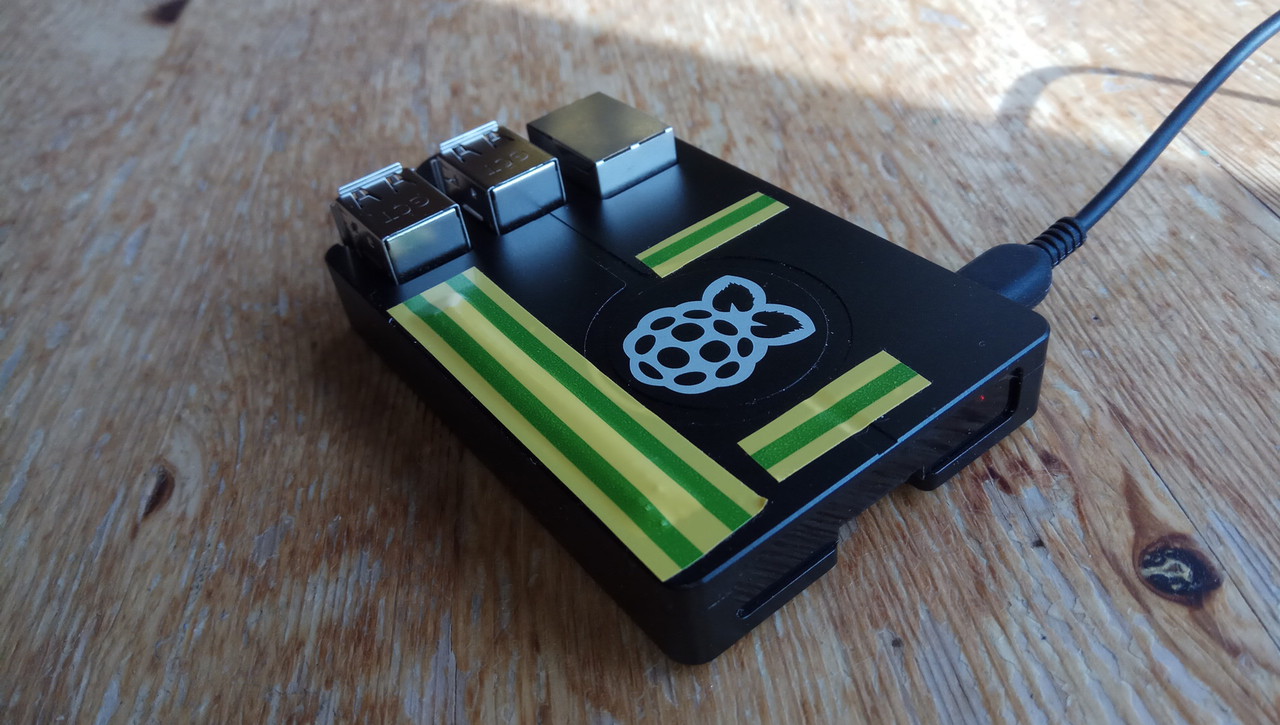
Test 4 : raspi sitting seitkant vertical on a horizontal wood desktop:

Test 5 : raspi sitting hochkant vertical on a horizontal styrofoam piece:
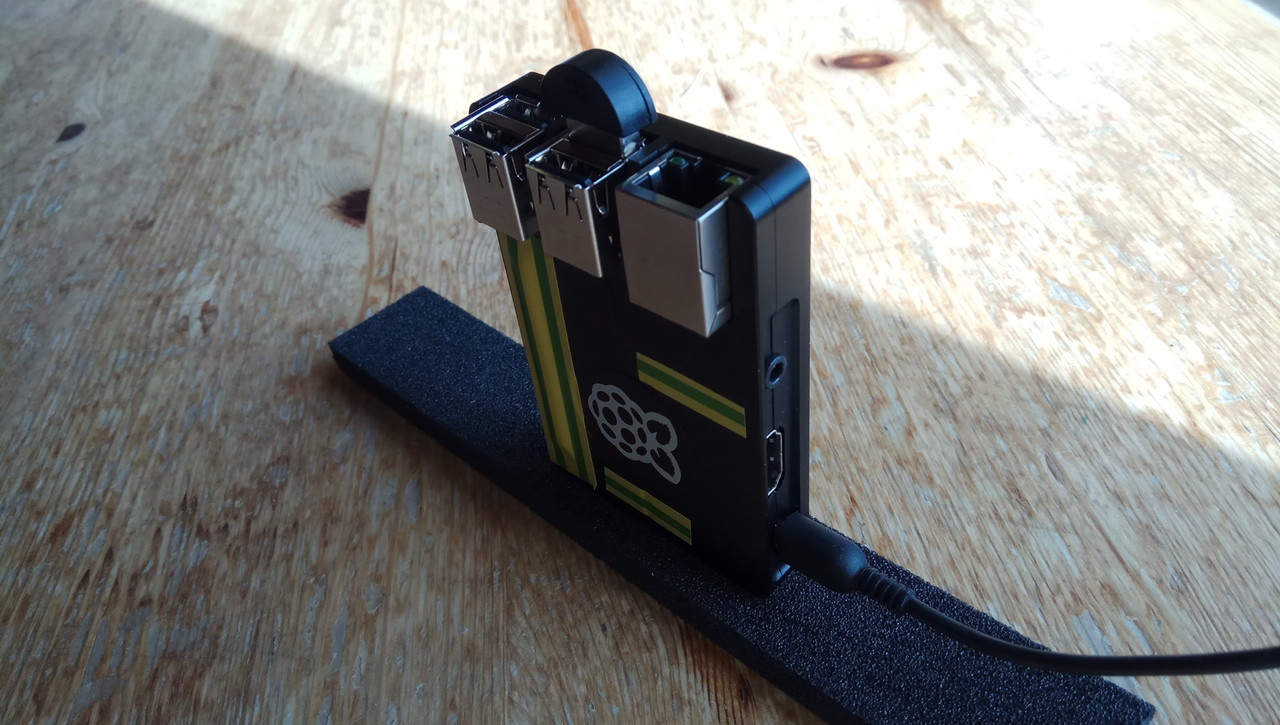
A picture is worth a thousand words, so i won't bore you with the detailed description or explanation or interpretation of the temperature graphs. To me, they all make sense in comparison, no real surprises here:
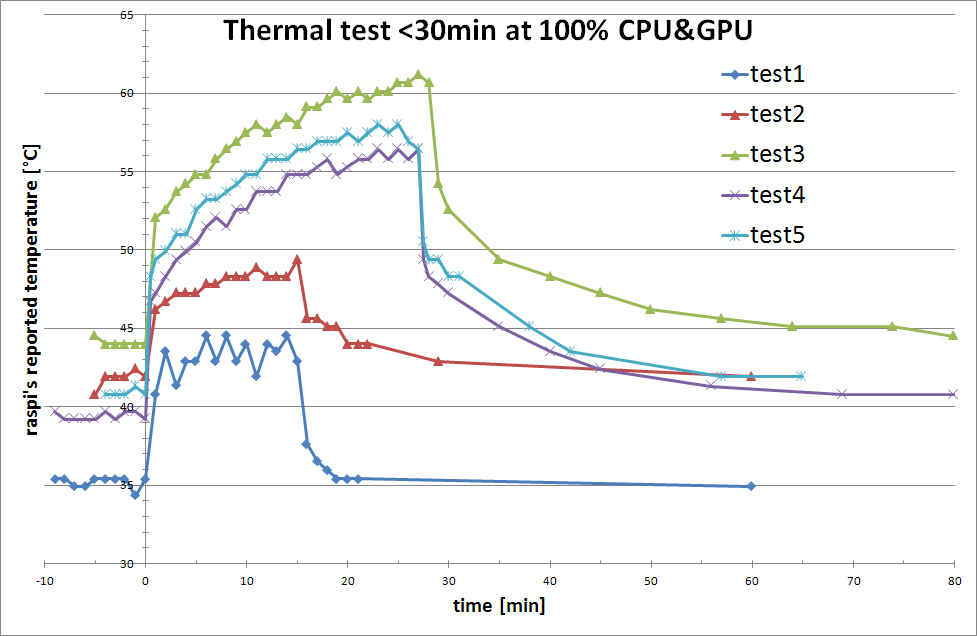
Note that raspi's temperature measurement resolution is around +0.55°C, even though its one decimal could suggest a resolution of +0.1°C, if you didn't know any better. For your reference, here is a table of explicit numerical data extracted from the above chart:
Last but not least a size comparison of the assembled raspi. The 92.0x61.0mm dimensions equal very much the footprint of a credit card (86x54mm):

The weight is 140g with USB microphone and shutdown button:

Hope you enjoyed the story time. Let me know if you have questions regarding this assembly & test project. Imho it was a real success, even though i messed up the label sticker lol.
And if you are a raspi owner too, feel free to do perform the 100%-load test too (for 15-27min) and share the reported temperature. I am quite curious how this raspi case's thermal performance compares to other raspi aluminum cases with passive cooling.
The raspi (here: Raspberry Pi 3 Model B ©2015
 ) is probably the #1 best-selling single-board-computer (SBC) ever. While more modern, higher performance, easier-to-use competitors exist (ASUS Tinker Board, LattePanda, a. o.), they also cost more and draw more energy from the USB power source, which could be a critical factor for the application.
) is probably the #1 best-selling single-board-computer (SBC) ever. While more modern, higher performance, easier-to-use competitors exist (ASUS Tinker Board, LattePanda, a. o.), they also cost more and draw more energy from the USB power source, which could be a critical factor for the application. Thanks to raspi's immense popularity several commercial aluminum cases are/were available on the market for the various raspi versions, apart from the non-commercial aluminum cases built by DIY engineers. Today i am presenting the slimmest most compact commercial alu case, its assembly, along with a non-invasive mod plus a set of thermal tests. Feel free to use my test results as reference and compare them with your own test results of this or other raspi cases.
Most raspi (or SBC) owners have an adequate inexpensive 4US$ case solution yet, are happy with what they've got or diy made, or don't want/need a nicer case. I am fully aware that the problem with expensive cases such as this (14-28US$ shipped, depending on source!) is that, as soon as a newer raspi version is released, one cannot recycle the case for the newer electronics. So the main motivation why i am posting today is: i planned a mod, did the mod, am extremely pleased with the result, and wanted to share it, because knowledge is power and sharing is fun! :huh:
pro's
- no thermal paste, thermal grease, or thermal glue needed. 1.0mm thermal pad suffices.
- non-invasive mod re case or pcb not necessary
- extremely effective heat-sinking, all 3 chips are cooled at the same time
- few simple tools needed, very easy installation
- the most compact case on the market, with also elegant design
- leaves full access to all internal ports
- absolutely amazing build quality, fit and finish
- fully CNC-machined parts, thick walls, no flex, absolutely rigid
- the two LED's are clearly visible through the back
- easily accessible micro SD card
- expensive purchase, depending on source
- black anodization looks ugly, i'd prefer white color
- dust could enter through the top interface ports
- generic, no-name, does not come with bottom label or any branding
- i had to trim the copper shim as part of the mod, was work. i don't like work
- WiFi signal remains strong enough? (signal strength tests pending)
Never mind the mod, this case brings joy and satisfaction to the raspi hobby! The construction, design, build quality, accurate machining, heavy wall thickness, effective cooling, slim form factor makes this case a wonderful choice for people wanting a commercial case made out of metal. The price may be steep compared to other commercial cases but imho the product is worth every cent. And you're not overpaying a bit, since the Chinese end consumers don't get it cheaper through Taobao. Fully approved and highly recommended by the squirrel!
Part I. The assembly with the mod.
Each of the 40+ pics is to highlight 1 certain aspect which i will be commenting upon. The pics are in chrono/logical order, as i went on with the assembly project. Now without further ado, let's get to the details, may the story time begin!
Originally the inside of the case heatsinks chip1 and chip3 only and does not contact chip2. After having taken careful measurements of all and everything, my calculations told me that i would need a copper shim of exactly 1.50mm thickness plus a 1.0mm thermal pad to bridge the air gap between chip2 and case (inner wall). With this knowledge i ordered a pack of 20x20x1.50mm heatsink copper shims. Fast shipping, fast delivery, the shims arrived as expected, with smooth flat surfaces. I was curious about how the surface would polish up:

How does one trim 20x20mm to 10x10mm? In the end i wasted 3 shims with my attempts. I tried hard to cut the shim with various Stanley knives. On very thin shims such cutting would work, but on 1.5mm thick shims it failed! I was able to cut through the thickness with my Victorinox and Leatherman pliers wire cutters, however this method bent the shims irregularly. The slightest bend and one had to toss the part:

How about a vise and a metal saw? The vise would have crushed one end of the part, leaving the other end stress-free. I was too lazy to go after this failsafe method and decided to try some sawing action with the file of my Spirit X multitool. Took ages lol but we were getting somewhere:

The bottom case (bottom half of the enclosure) is to cool/heatsink chip3. Sophisticated machining, flawless anodization, thick material thickness, loving it:

For all intents and purposes we'd still need a thermal pad, if we weren't using thermal paste/grease. The manufacturer provided 1.0mm thick thermal pads, perfectly fitting. The pads are not really sticky but as far as i can tell they do have some sort of adhesive on their surface:

I did a quick check to see if the case was touching the pad. The 'cooler3' did leave a mark on the pad, cool:

The top case (top half of the enclosure) does not have a 'cooler2' for chip2. One could regard my thick shim as heatsink, cooler, or bridge, feel free to call it as you wish:

Since there are electronic components located in the immediate vicinity of chip2, the shim should not be larger than chip2. Size comparison:

So there's chip2. But how would you stack the shim and the pad, in which order? Chip+shim+pad or chip+pad+shim? Anywho, do you have thermal paste at hand? Keep in mind that the shim is a free-floating part in the stack, unless you fix it to either the case or the chip. Fix how? Best would be thermal glue. I decided to simply use tacky glue and attach the shim directly to the chip:

Why? Because perfect positioning of the shim was crucial. By moving and pressing the shim gently onto the chip i minimized the glue layer and made sure that no air bubble was trapped in between. Some glue spilled over, no big deal:

No big deal, because the spilled glue contracts after the volatiles have evaporated. It was also time to cut some thermal pad in the size of 10x10mm:

A test seating. Nice. The rear part is made out of some transparent black plastic material which reminds me of acrylic glass/Plexiglass. Both faces are covered/protected with a pseudo-adhesive paper:

The part was cut professionally, probably with laser-cutting technology. It fits accurately into the CNC-drill machined groove. Due to the geometries minimal wiggle room in some direction would be natural:

The finish of the plastic faces is uber smooth. Mirror finish:

I came up with the idea to create a snug fit by adding a layer of adhesive film on top of the mirror finish. The clear adhesive film could also protect against scratches. Usually this kind of film is used in gemani to protect book covers against dust, humidity, dirt, wear and tear. It does not stick aggressively to surfaces and does not leave glue residues. I also use it as screen protector on some displays:

It is not necessary to cover both faces of the plastic part with the adhesive film, just the outside face. But the point is to wrap the film around the edges so that this would create a snug fit in the precisely machined groove:

Sticking the film to the upper edge ensures that now all 3 directions, x-, y-, and z-directions, are padded by the film, which would leave no possible wiggle room after the complete assembly:

Yes, i can feel it, the fitment is now snug. The film will prevent any kind of rattling sound, even if there will still wiggle room left. But there is isn't, hehe:

Looks legit so far, what do you think? A pic before the addition of thermal pads:

A pic after the addition of thermal pads. All thermal pads used in the assembly have the same thickness, 1.0mm:

What does the inside of the upper case half look like? Looks quite elaborate, if you ask me. As you can see, there is only a 'cooler1' for chip1. Other raspi commercial aluminum cases do have a 'cooler2' for chip2, which is why i got inspired to add a cooler in this case for chip2. Anyhow, here are 2 shots in succession:


Finally i put the upper case half on top of the lower case half w/ its seated PCB, flipped the entire case, screwed in the screws with the provided Allen key together. The bottom side of the case has recesses for the four rubber feet and an optional label, what a nice touch:

Wow, this was interesting. After tightening the four screws, i noticed that the two halves didn't match up perfectly at the seam. No perfect fit, that is alignment, by maybe half a millimeter. So i loosened all four screws, corrected the alignment by that half a millimeter, and then retightened the screws. Voila, this did the trick. Now i got the perfect fit, really beautiful, you cannot feel the seam anymore:

The plastic part had a mirror finish. Unfortunately the adhesive film ruins that look. Also note the thickness of the plastic and the aluminum, so sweet:

The following is optional, placing a label sticker in the recess. But i really wanted to have a label in there! I thought that the logo from the raspi retail packaging was a suitable pick. So i cut it out, roughly with a Stanley knife:

As you could tell from the color, the material is made out of some cardboard paper, good quality stuff. Since i didn't have thin double-sided adhesive tape in the household, i thought that i could stick the paper to white duct tape with my paper glue. Duct tape sticks reasonably well on anodized aluminum and could be removed without leaving residues. And while we're at it, why not protect the paper label side with clear packaging tape? I do have lots of tape in the household:

So i stuck the white duct tape temporarily on non-sticky paper, sourced from adhesive film remains, put some glue on it, then the logo paper, then the clear packaging type, thereby creating a diy laminate consisting of 5 layers. I felt like a pro! Then i placed this laminate under a table foot with an eraser for even weight distribution and left it there for drying overnight:

The next morning i cut the label out as best as i could. Poor job. I failed at the dimensions and also the corners. If i had a second try, i'd do a much better job. Can't be satisfied with it but since i don't possess another retail box, i must live it, be a man and *uck it up:

Argh, the glue did not stick at all to the duct tape surface! What a fail. To not waste time any further, i decided to glue the label on the anodized aluminum. Not a great decision because this would mean a permanent solution basically:

Here again, you can see that the really smooth finish of the paper looks ruined after adding a layer of clear packaging tape. The rubber feet fit nicely into the circular recesses. They are of the clear type and have tiny bubbles inside. Cheaply manufactured i would say:

No need to trash the retail packaging bag. I closed the cutout hole and harhar taped the entire thing with clear packaging tape. Why? Because i am going to use it as carry bag, storage bag, and even operation bag. May no dust ever come inside my raspi in headless operation mode:

Oh! You still don't know what the product looks like from above? Finally the first shot showing what the assembled product looks like. I really dig it:

The slits in the aluminum are perfectly aligned with the internal ports. Really all ports are accessible, which is extraordinary for an aluminum case, just compare with other raspi aluminum cases on the market:

Since i don't make use of those three ports, i sealed them with electrician's tape. Protects against entry of my dandruff:

Only after the assembly of the case can one insert the micro SD card. It is easy to insert the card and pull it out through its convenient accessibility:

Yet another shot of the rear, now with the card inserted. I believe that the two nubs on the plastic have a function, you name it:

Aha yes sir, the black plastic is transparent after all! The two LED's are clearly visible. The red LED means that the raspi is connected to power, the green LED signals (write? read?) activity on the micro SD card. One must not disconnect the raspi from power when the green LED is on because such human interaction could corrupt the SD card:

Part II. The thermal tests.
I conducted a total of 5 tests. In all tests i waited until the raspi had reached a stationary state (steady state) in its environmental setting at no load (CPU&GPU = 0%). Basically you power up the raspi and do nothing further. The raspi will operate under no load, idling, but still consume energy to keep the operating system (Linux) alive, thus its internal temperature will be higher than normal room temperature. Then, at time t=0, i put the raspi under full load (CPU&GPU = 100%) for 15-27min and recorded the internal temperature, as reported by the raspi OS, every minute. When the hot temperature seemed to have reached its own steady state, i cut the load back to zero (CPU&GPU = 0%) and continued to record the internal temperature at various intervals, until the temperature was back at its load-free steady state level.
The only difference between the 5 tests was their external setup. As this raspi case proved to be an extremely effective heatsink, conducting the heat of the 3 chips effectively and fast to the outside of the entire aluminum body, any variation of the external setup could be made visible in the temperature measurements and affected the result.
Test 1 : raspi suspended vertically in the air and pointing with its rear to an upwards blowing fan:

Test 2 : same as test 1, but with fan removed:

Test 3 : raspi lying flat on a horizontal wood desktop. That's the standard setup, what the case is designed for:

Test 4 : raspi sitting seitkant vertical on a horizontal wood desktop:

Test 5 : raspi sitting hochkant vertical on a horizontal styrofoam piece:

A picture is worth a thousand words, so i won't bore you with the detailed description or explanation or interpretation of the temperature graphs. To me, they all make sense in comparison, no real surprises here:

Note that raspi's temperature measurement resolution is around +0.55°C, even though its one decimal could suggest a resolution of +0.1°C, if you didn't know any better. For your reference, here is a table of explicit numerical data extracted from the above chart:
| Test | final °C at 0% load | time to heat up | final °C at 100% load | time to cool off | delta °C |
| test1 | 35.2 °C | 4 min | 43.5 °C | 4 min | 8.3 °C |
| test2 | 41.8 °C | 8 min | 48.5 °C | 9 min | 6.7 °C |
| test3 | 44.1 °C | 25 min | 60.8 °C | 50 min | 16.7 °C |
| test4 | 39.4 °C | 18 min | 55.8 °C | 40 min | 16.4 °C |
| test5 | 40.9 °C | 17 min | 57.3 °C | 30 min | 16.4 °C |
Last but not least a size comparison of the assembled raspi. The 92.0x61.0mm dimensions equal very much the footprint of a credit card (86x54mm):

The weight is 140g with USB microphone and shutdown button:

Hope you enjoyed the story time. Let me know if you have questions regarding this assembly & test project. Imho it was a real success, even though i messed up the label sticker lol.
And if you are a raspi owner too, feel free to do perform the 100%-load test too (for 15-27min) and share the reported temperature. I am quite curious how this raspi case's thermal performance compares to other raspi aluminum cases with passive cooling.
tags: < box, case, casing, chassis, cover, enclosure, frame, half, holder, housing, shell >
Last edited:



 . Also no cardboard. Styrofoam scraps came into my mind and i was hoping that i could carve something, a stand, out of that material. Note that gluing styrofoam is a challenge, a pita, and i never met any RL person who glues styrofoam parts to build something from that material:
. Also no cardboard. Styrofoam scraps came into my mind and i was hoping that i could carve something, a stand, out of that material. Note that gluing styrofoam is a challenge, a pita, and i never met any RL person who glues styrofoam parts to build something from that material:












































